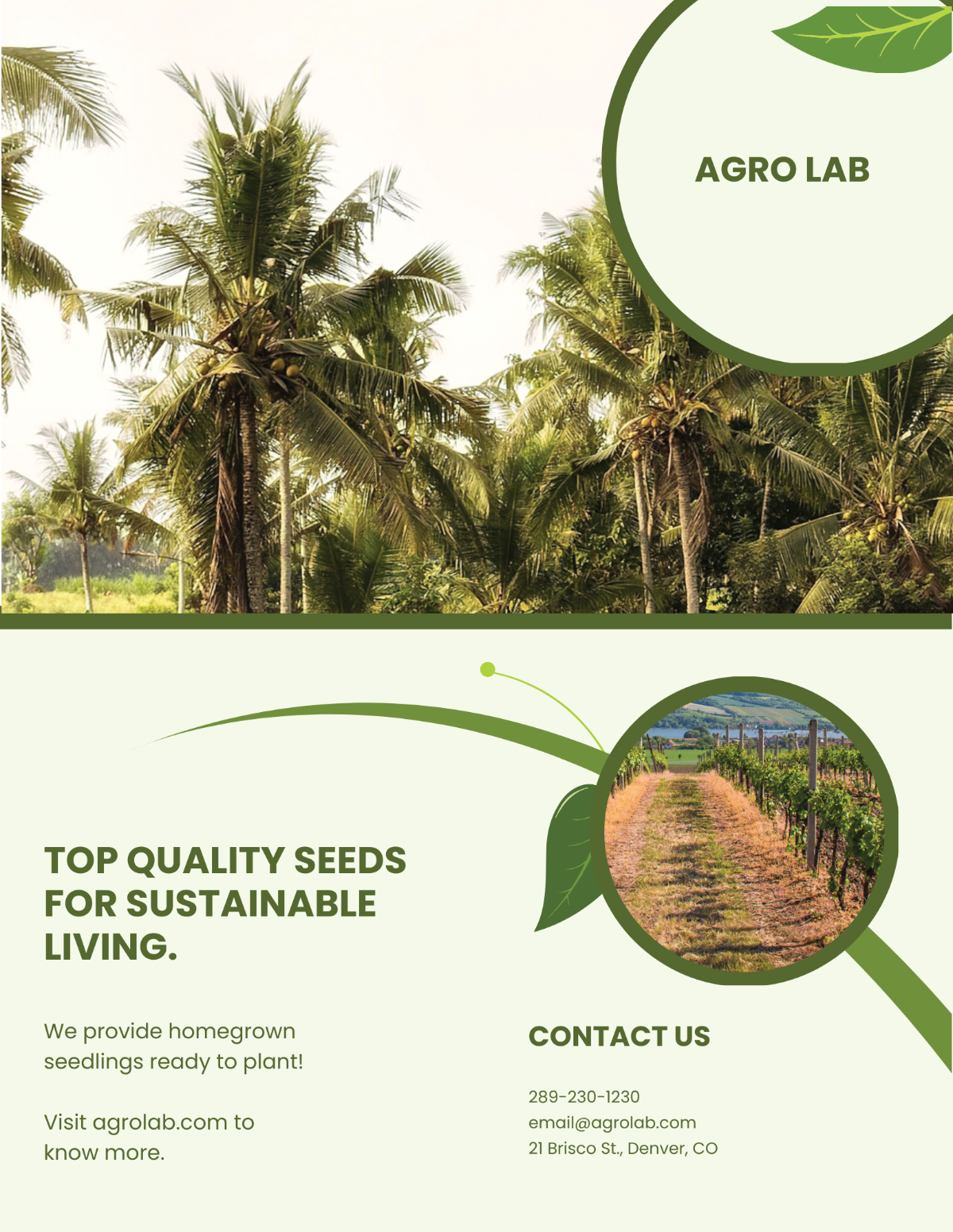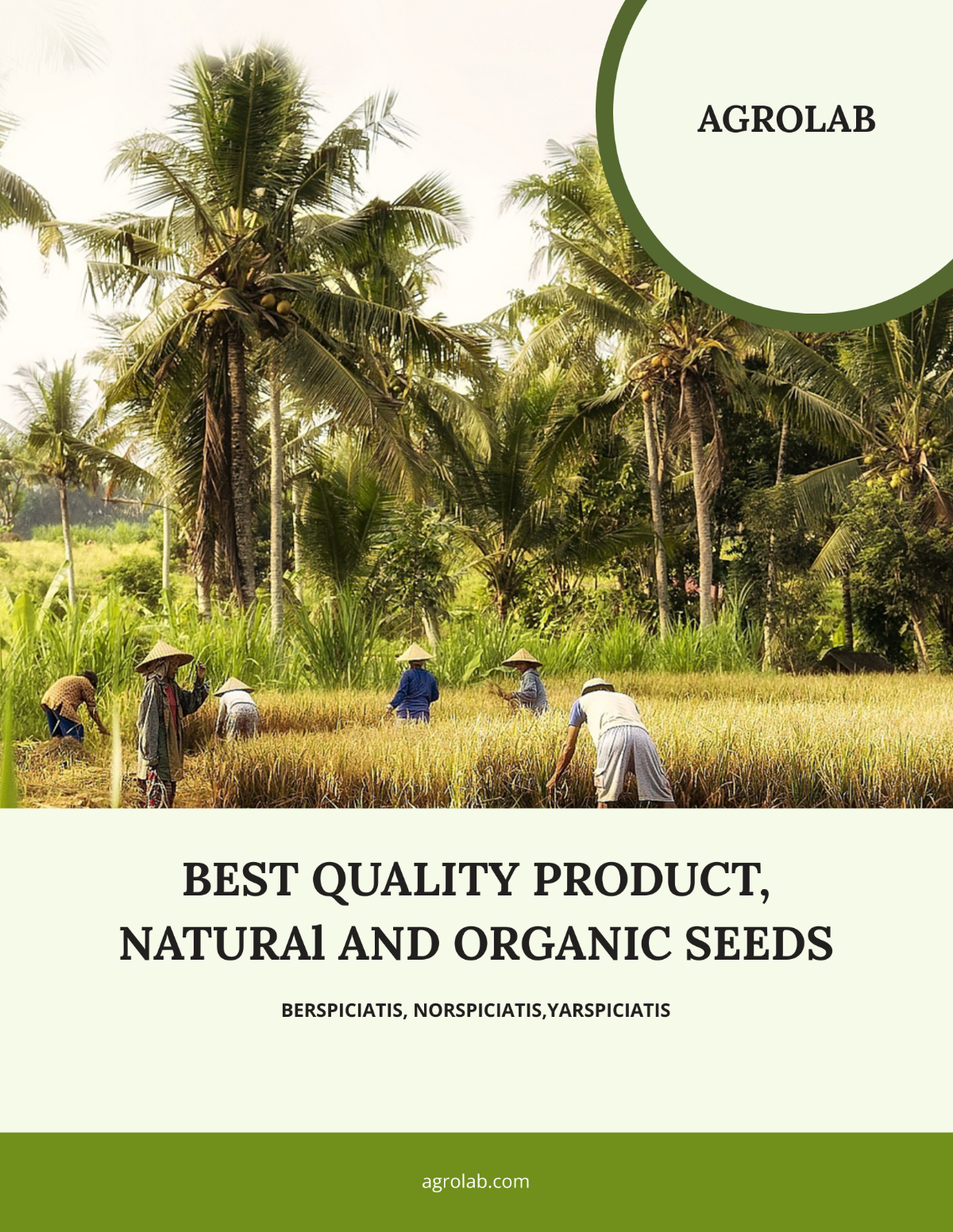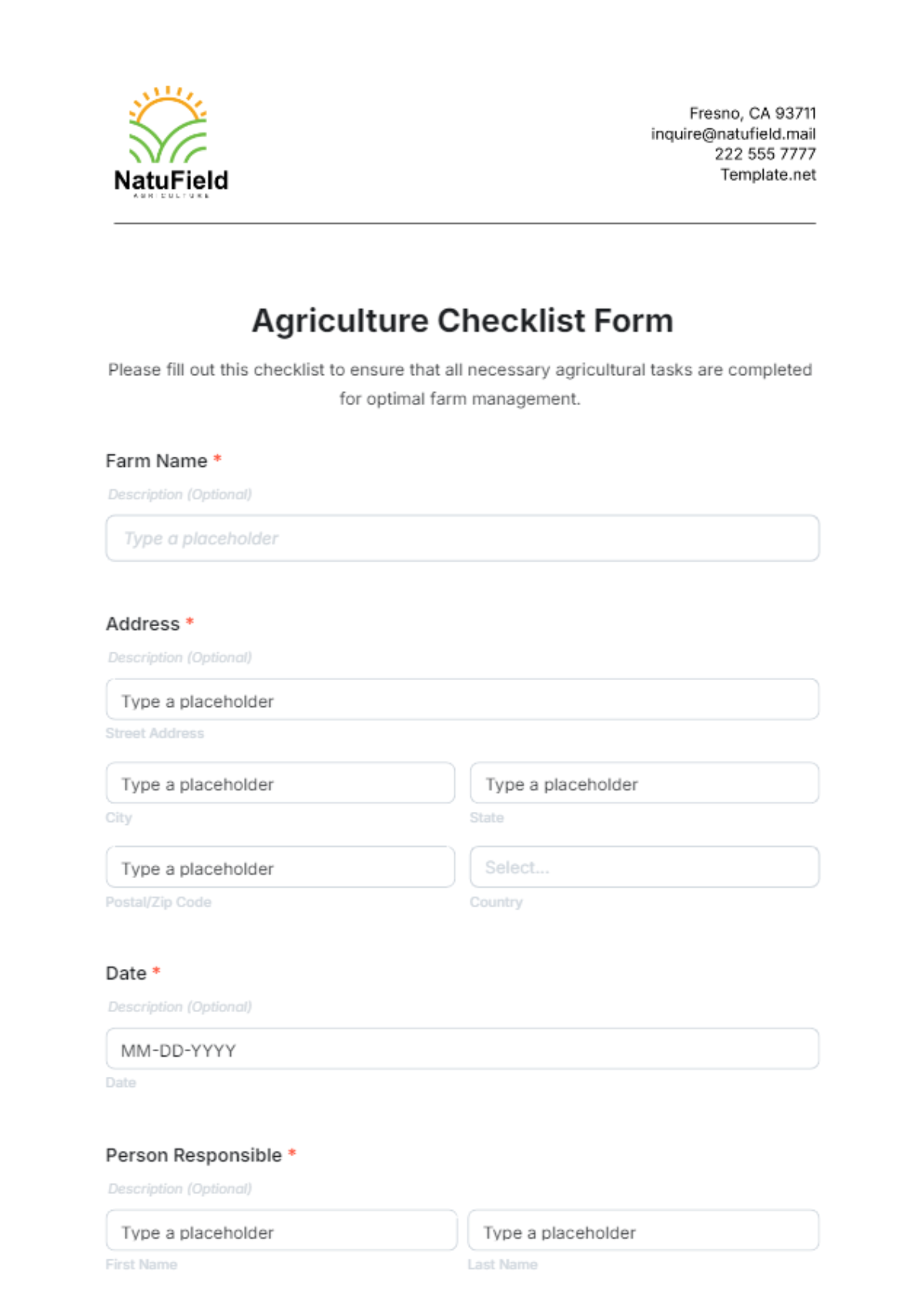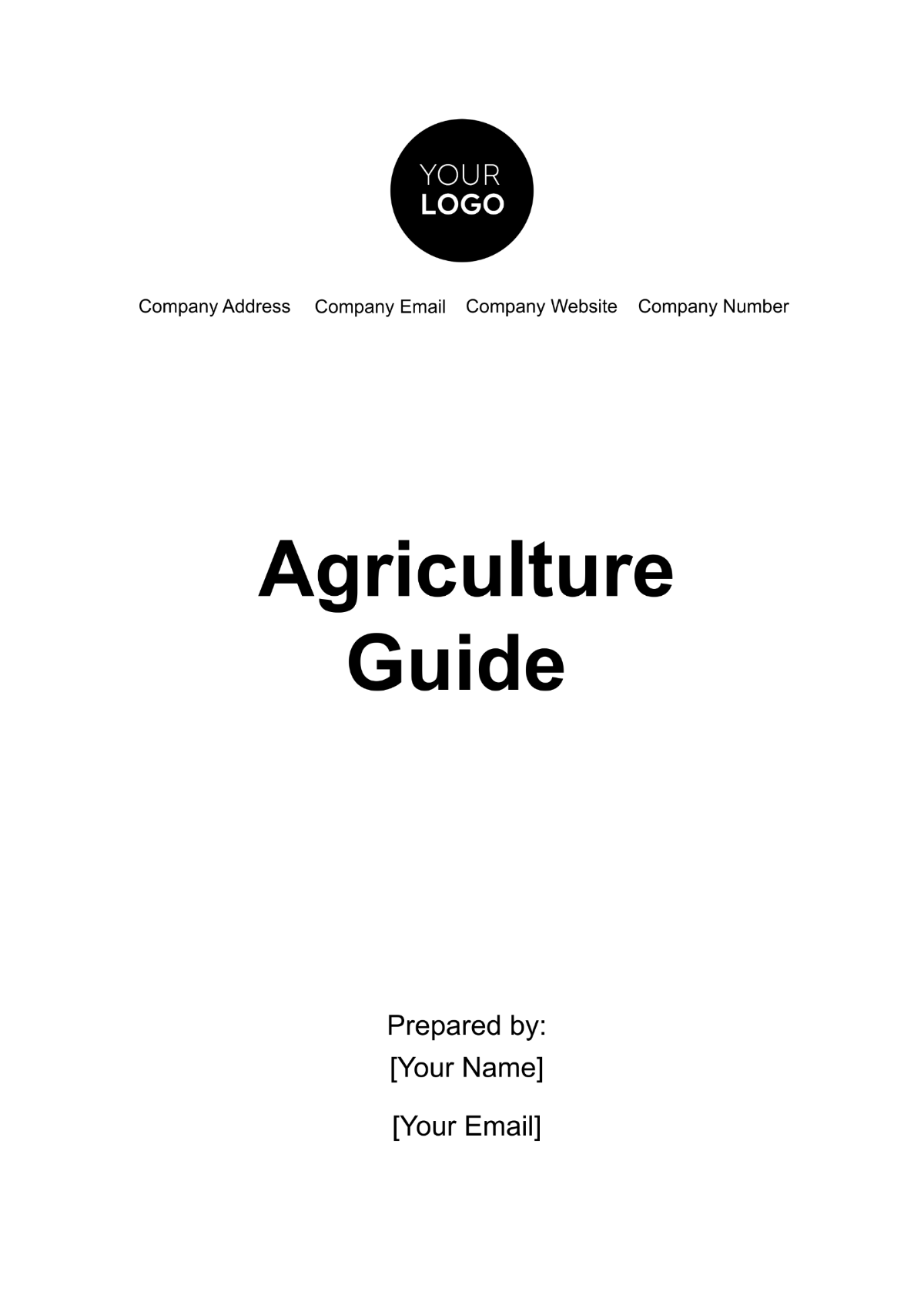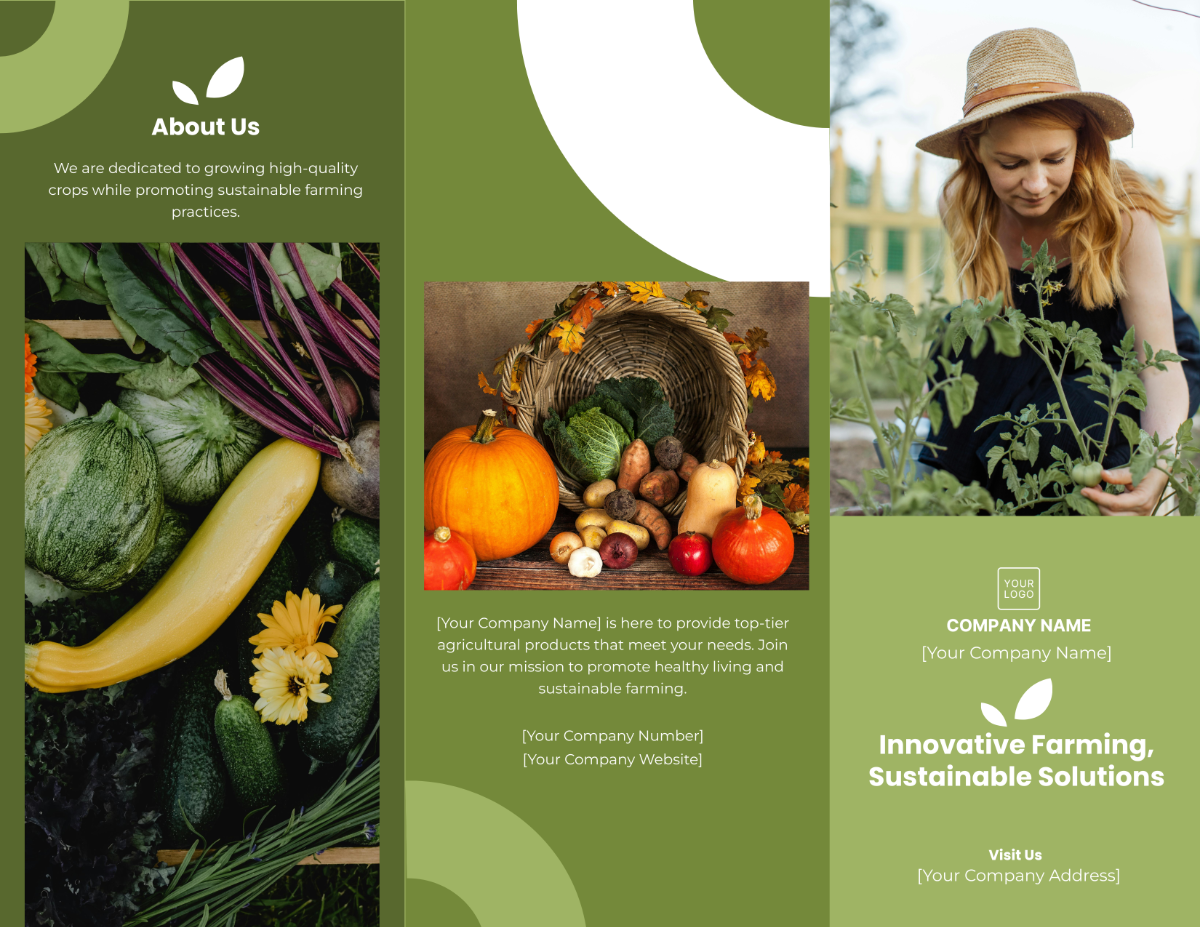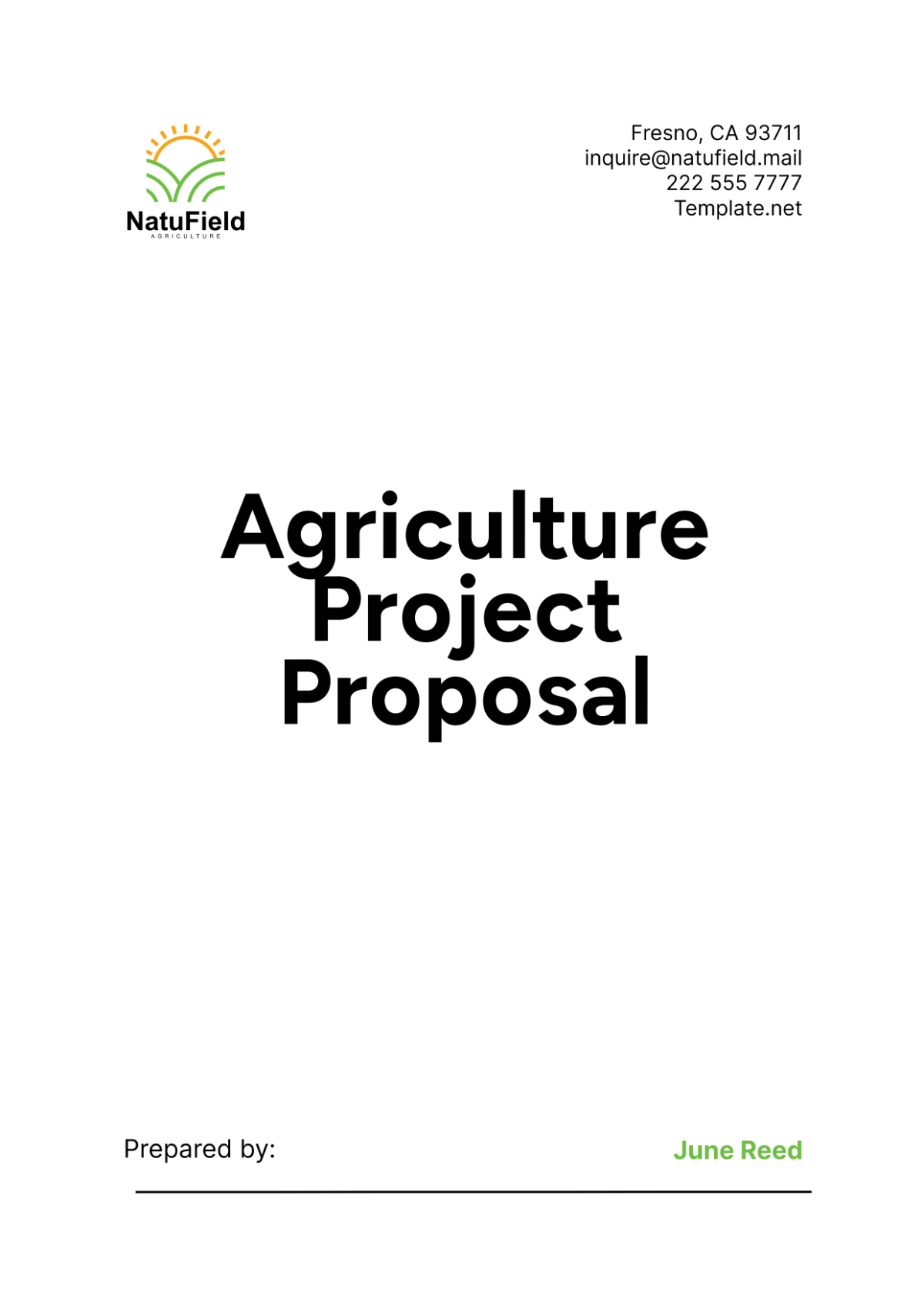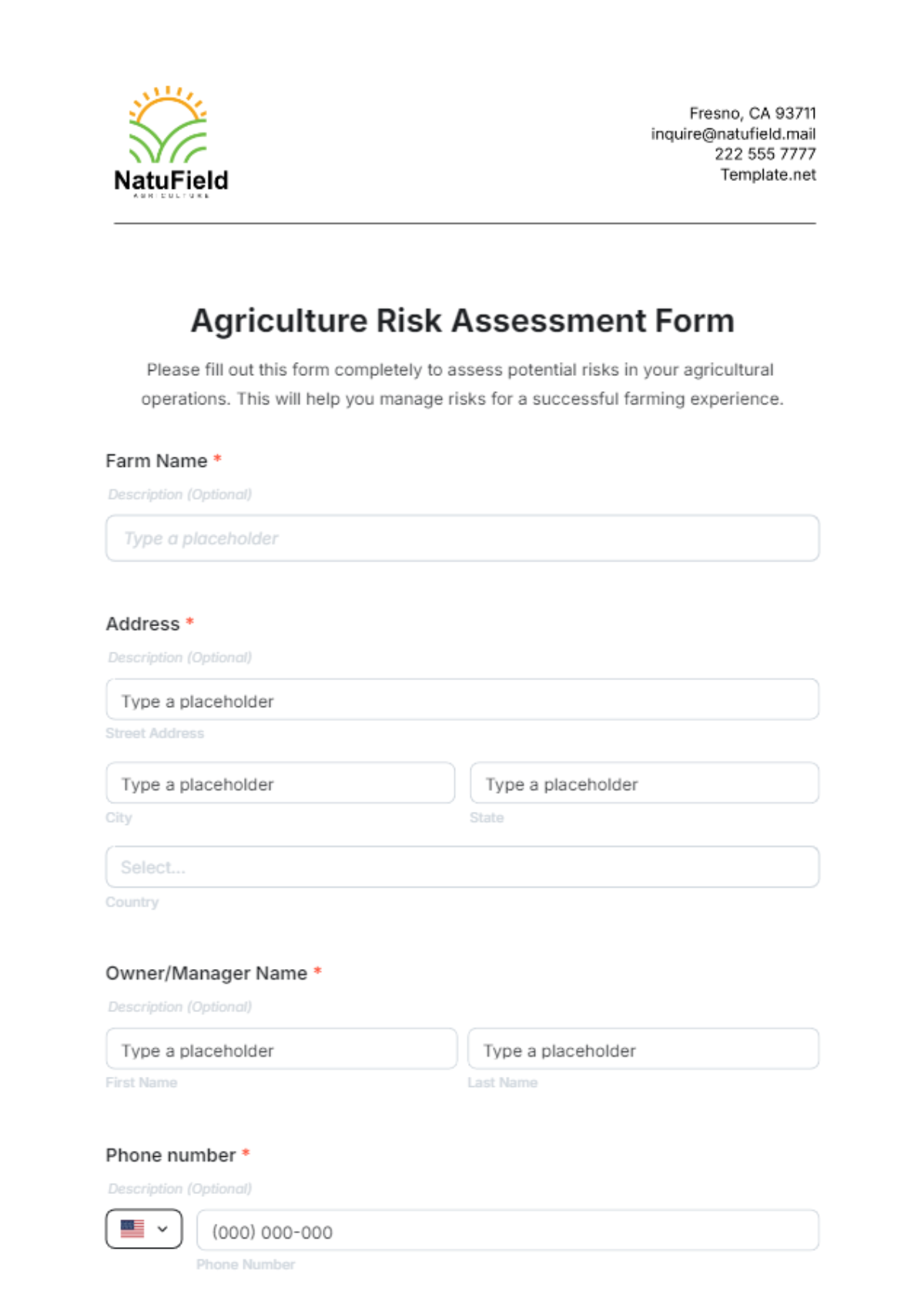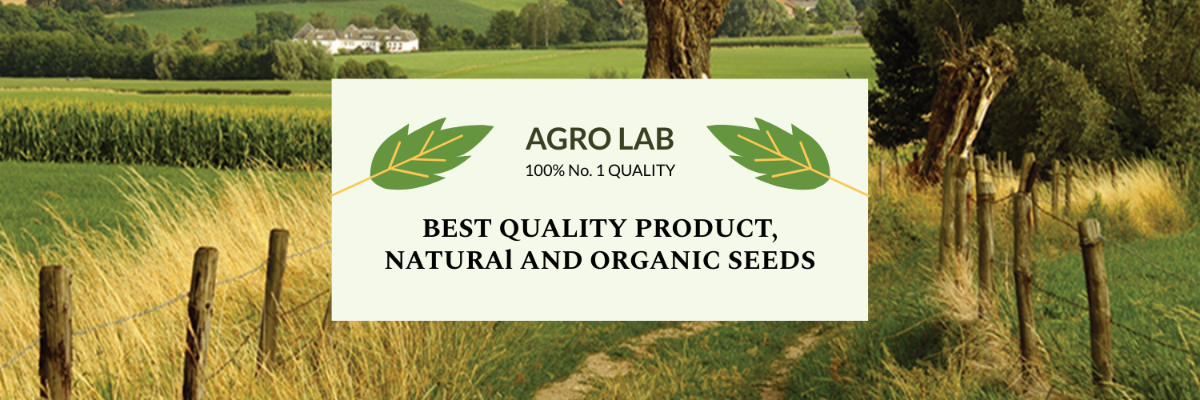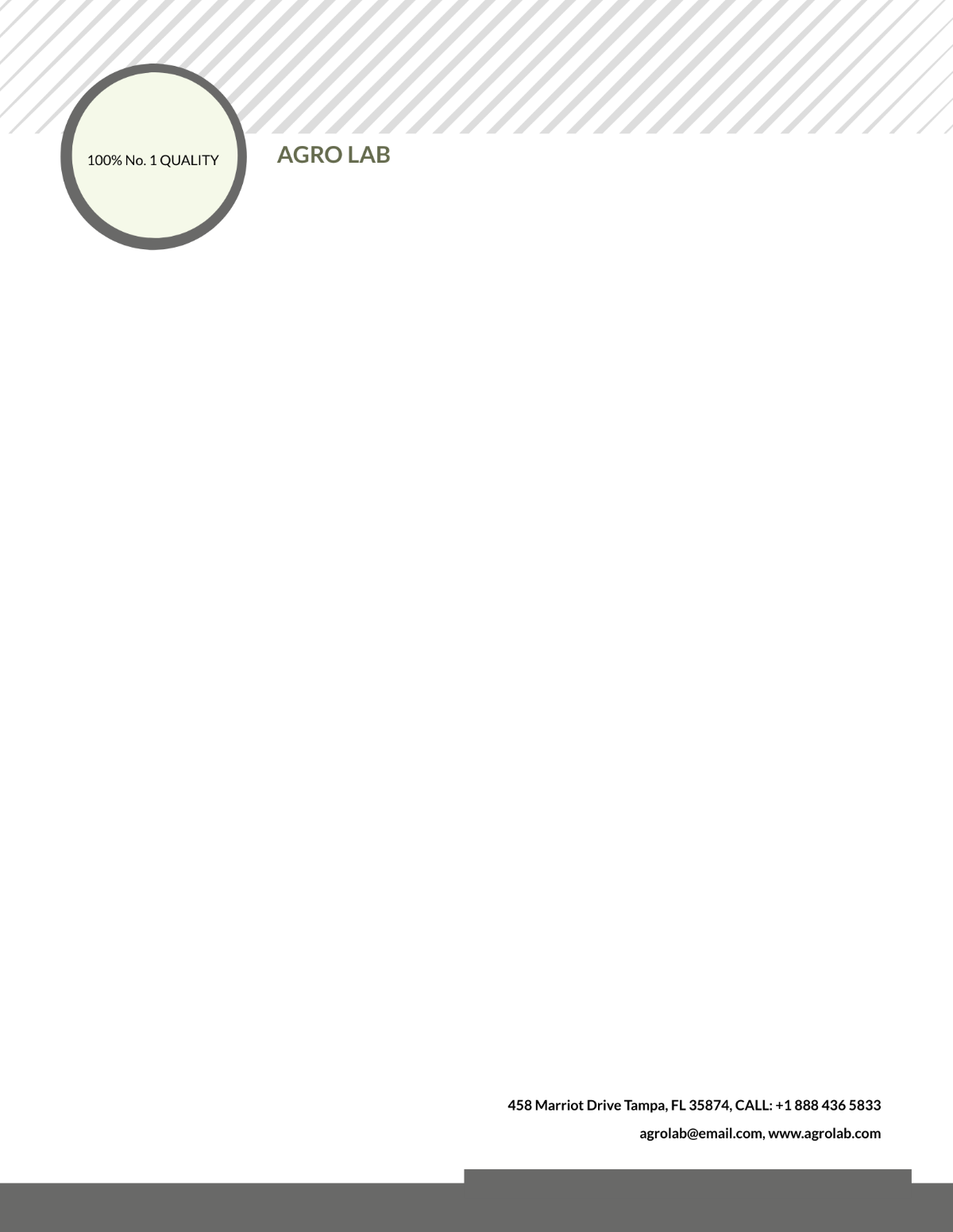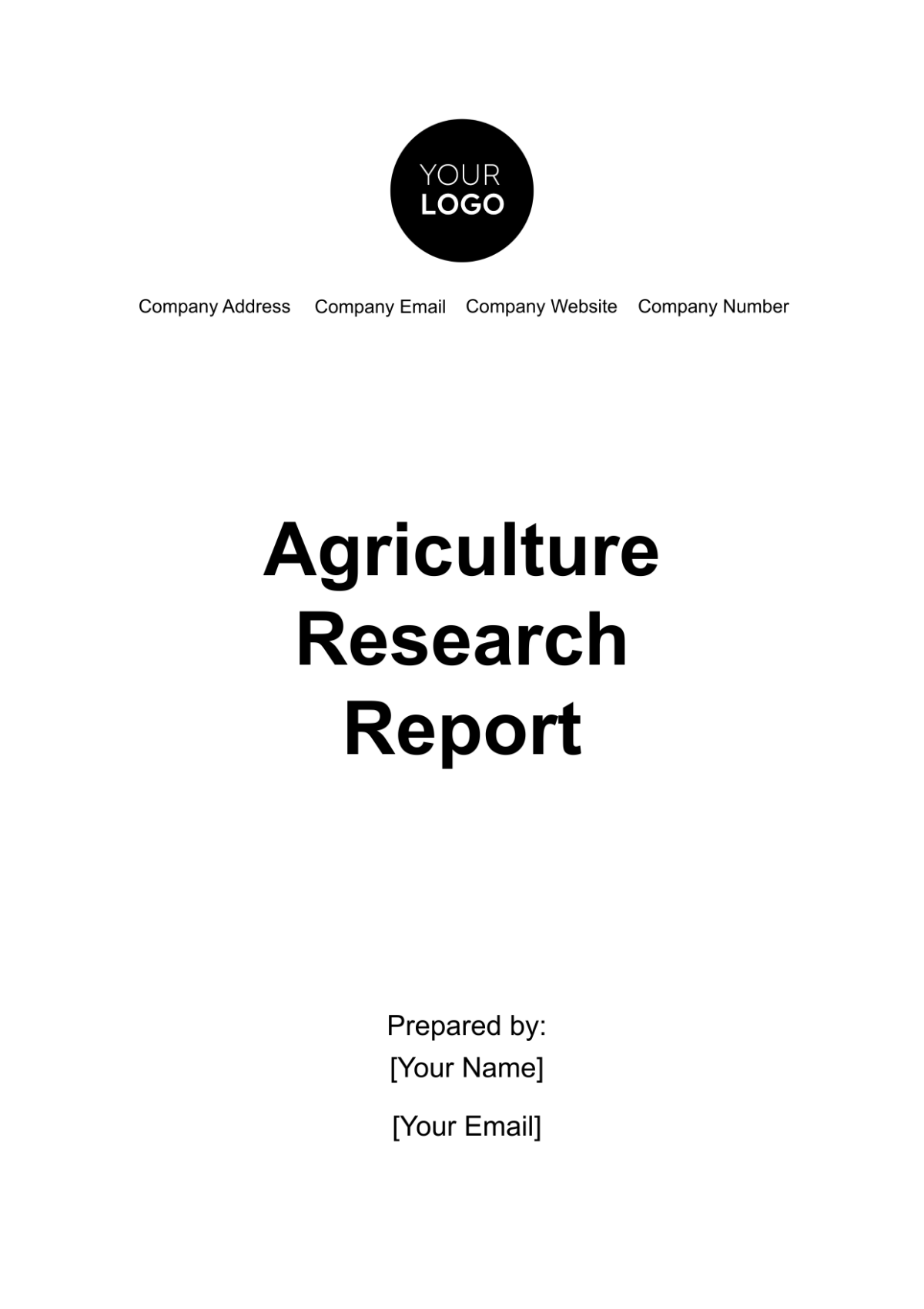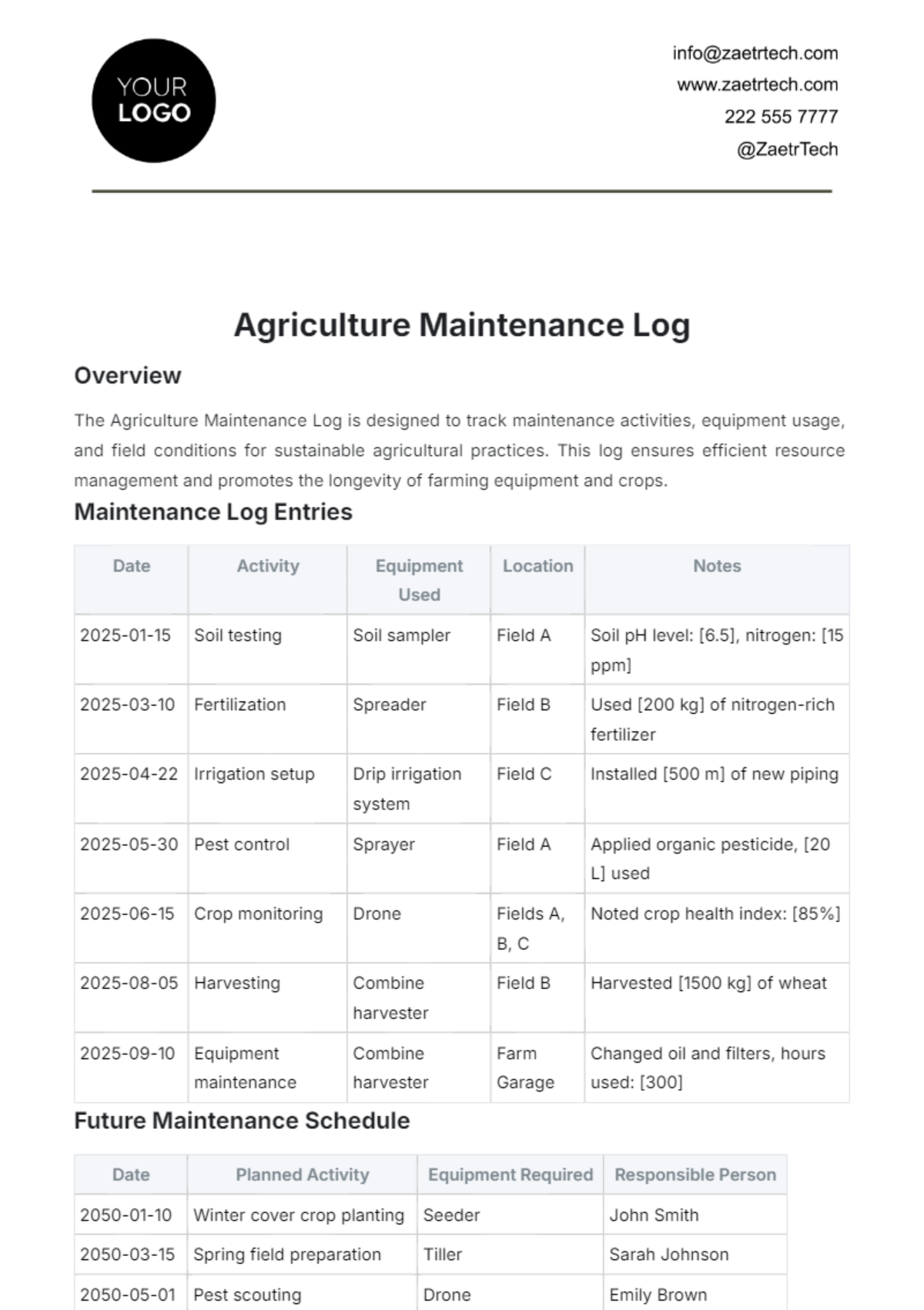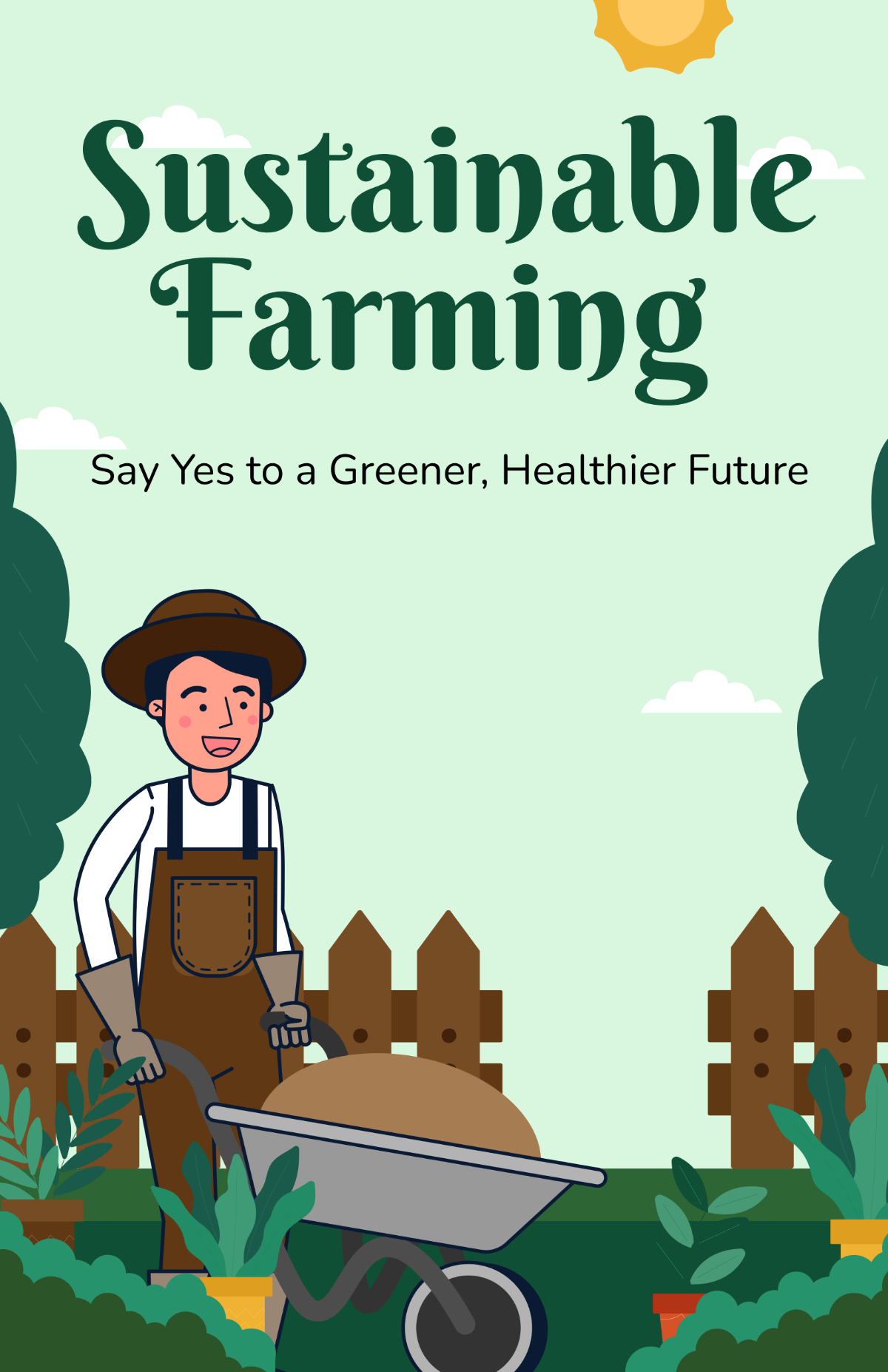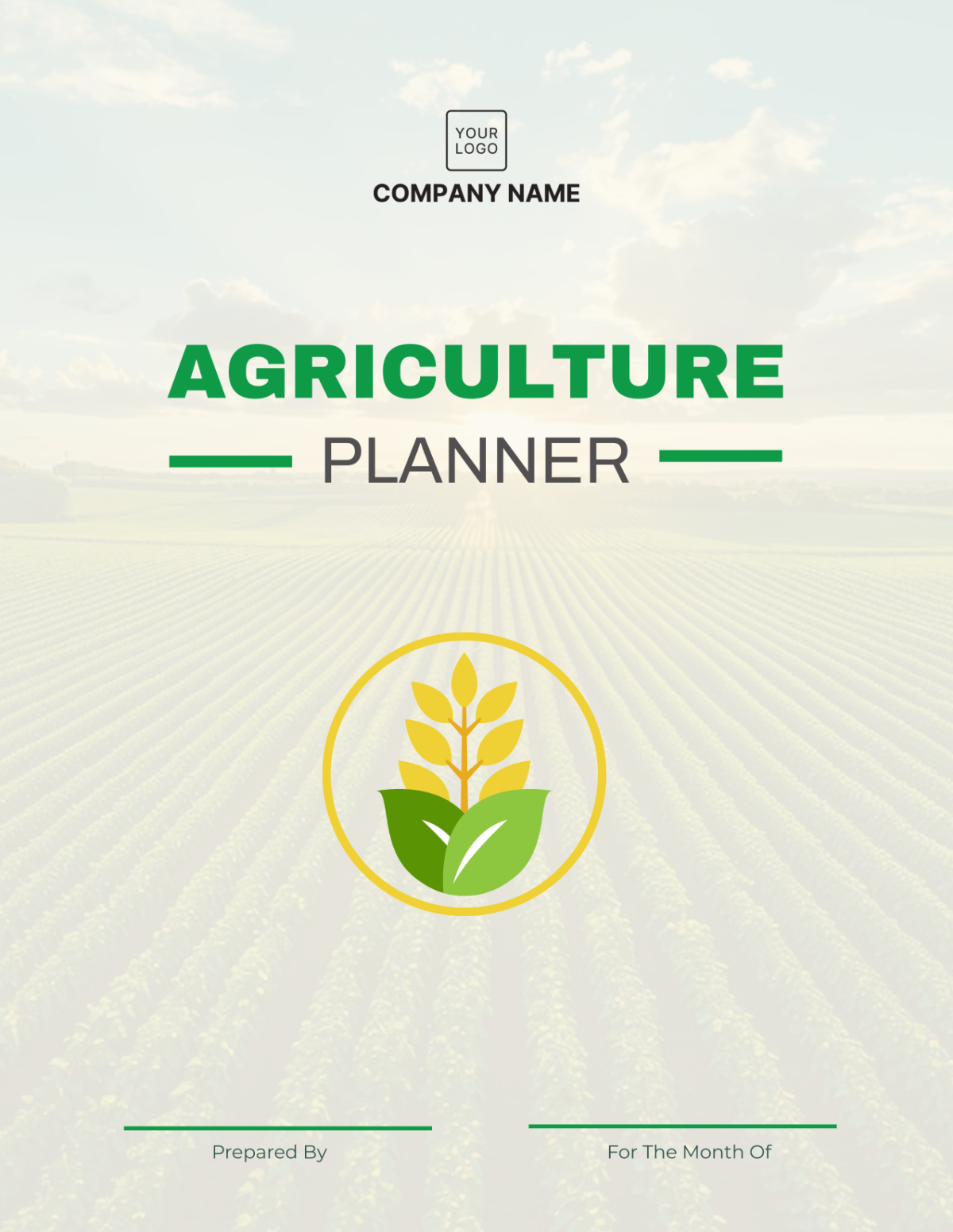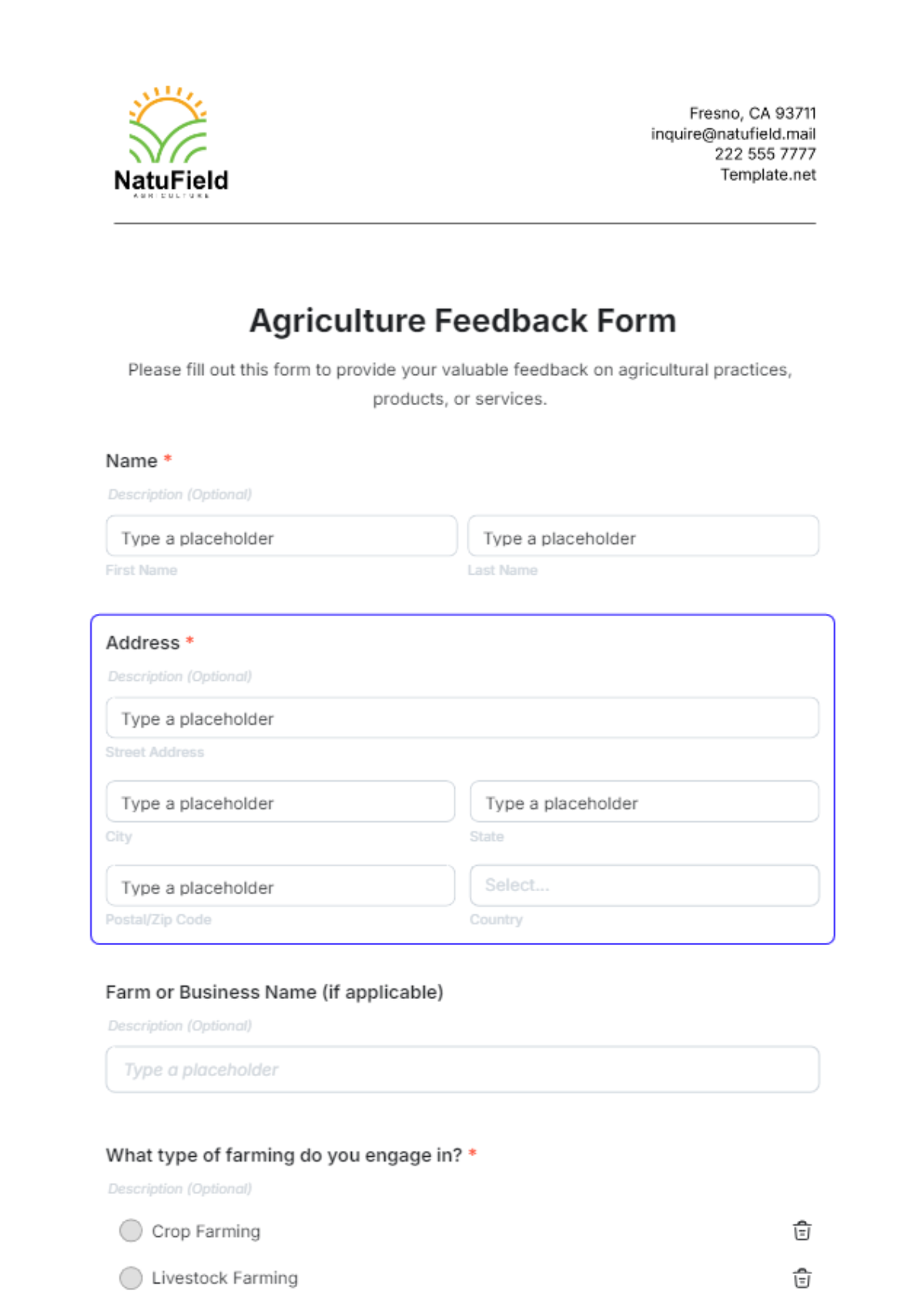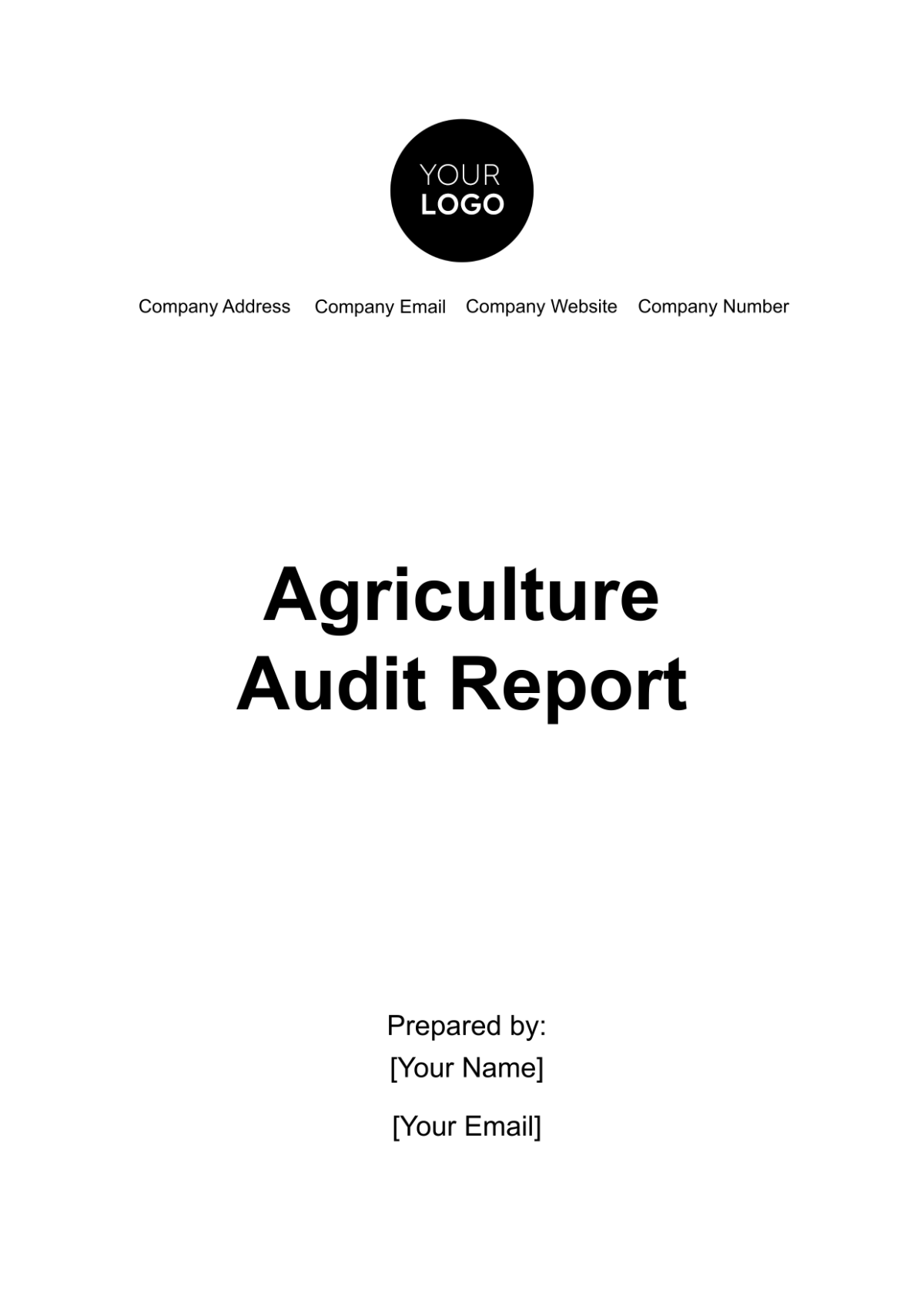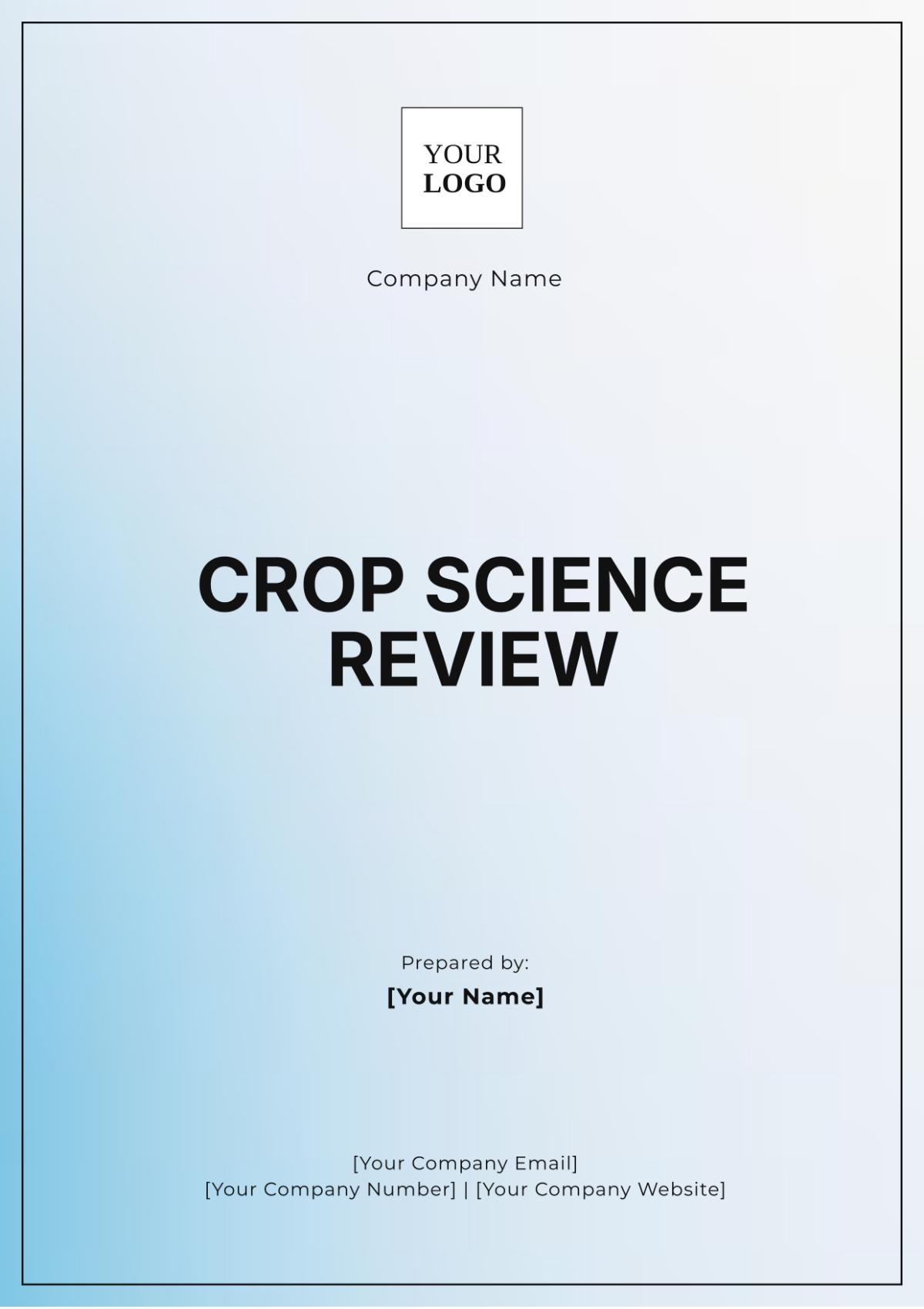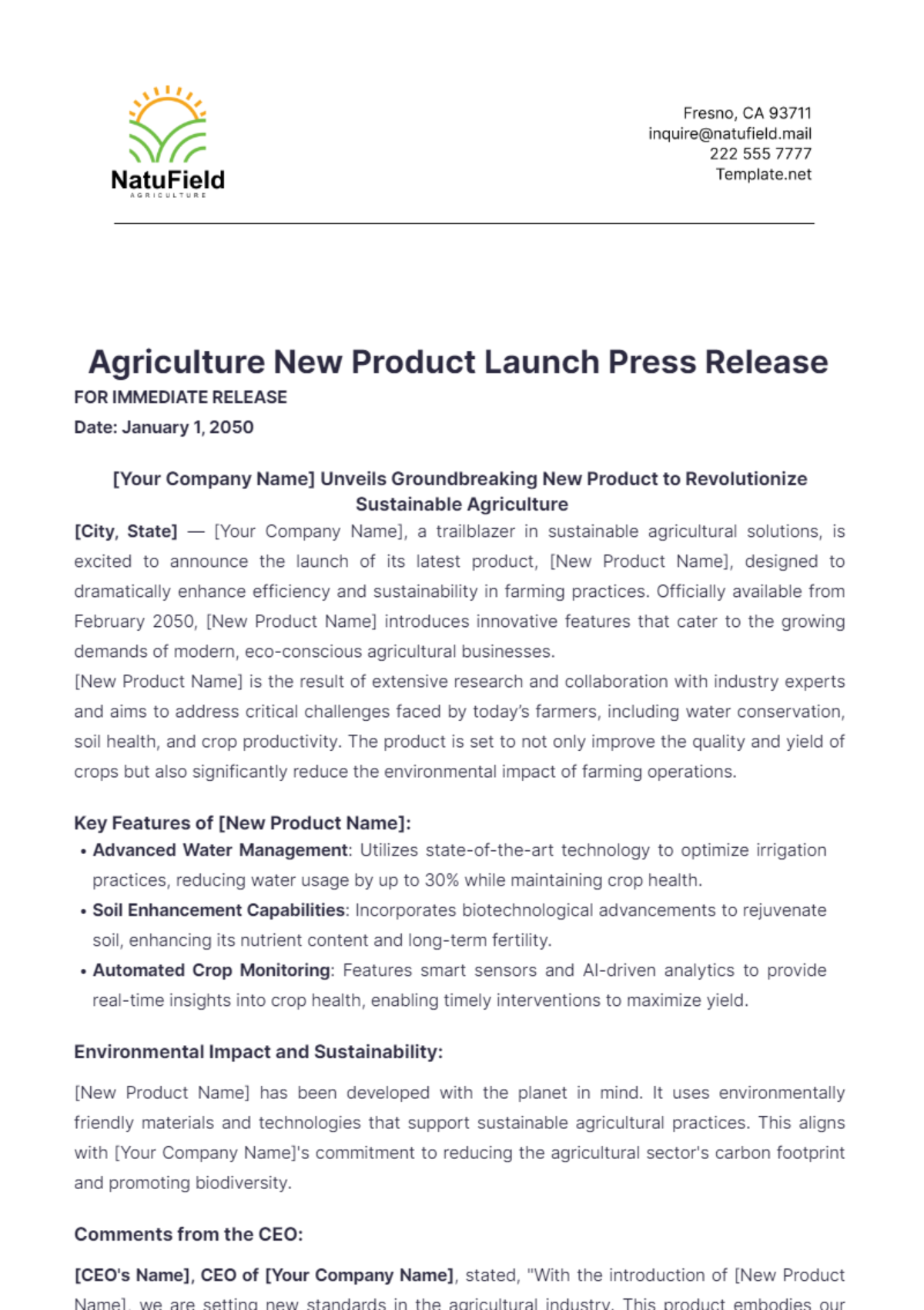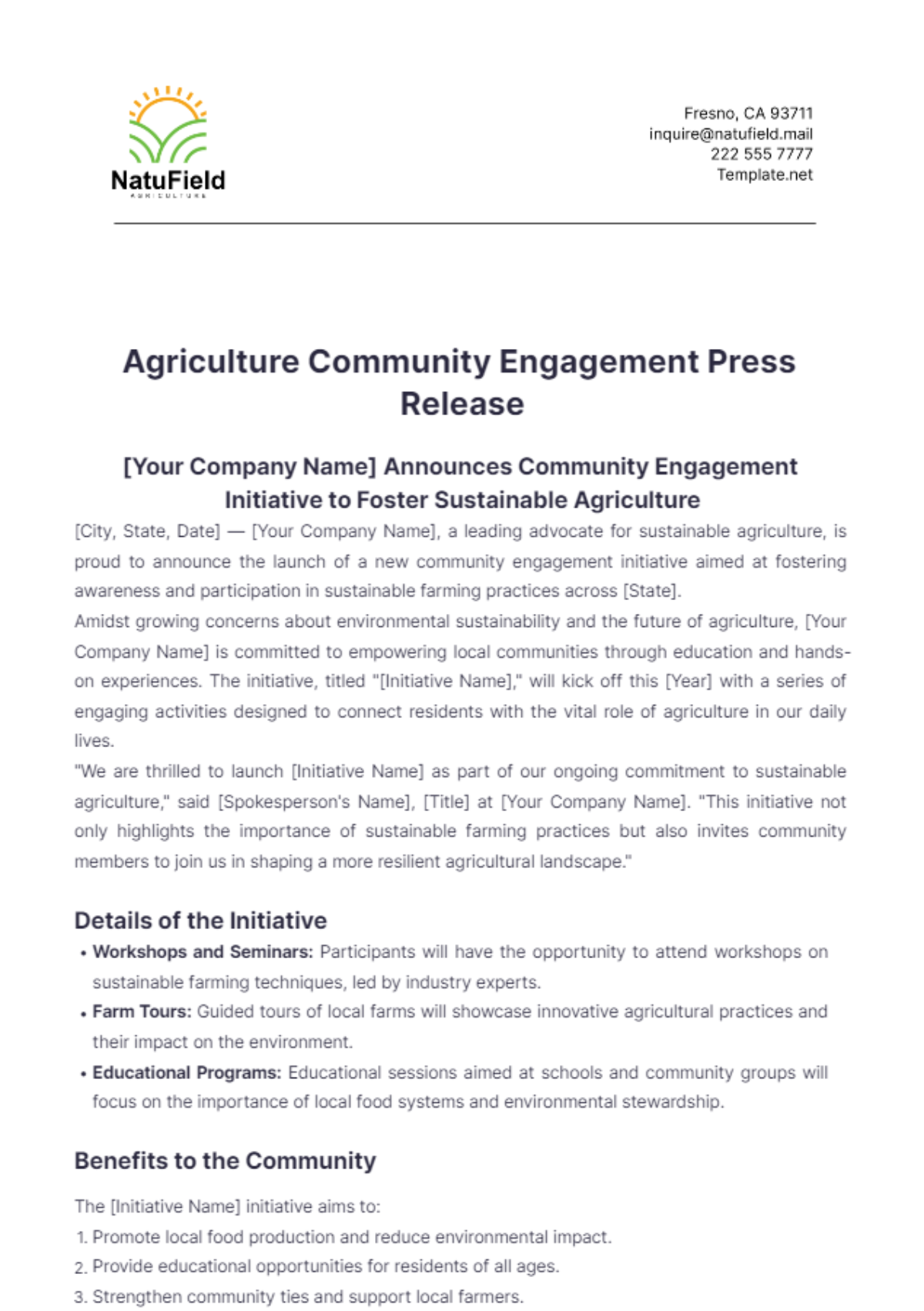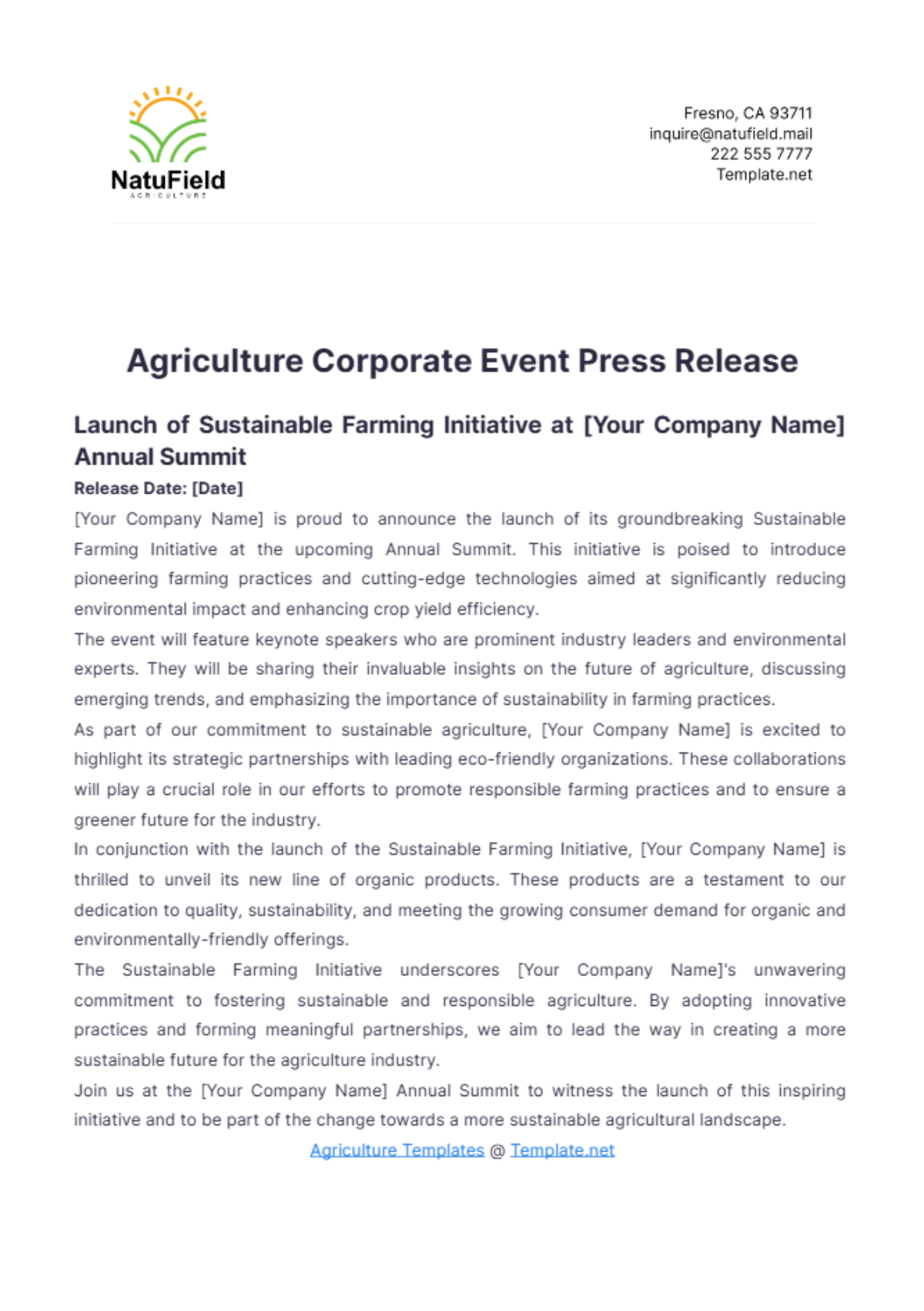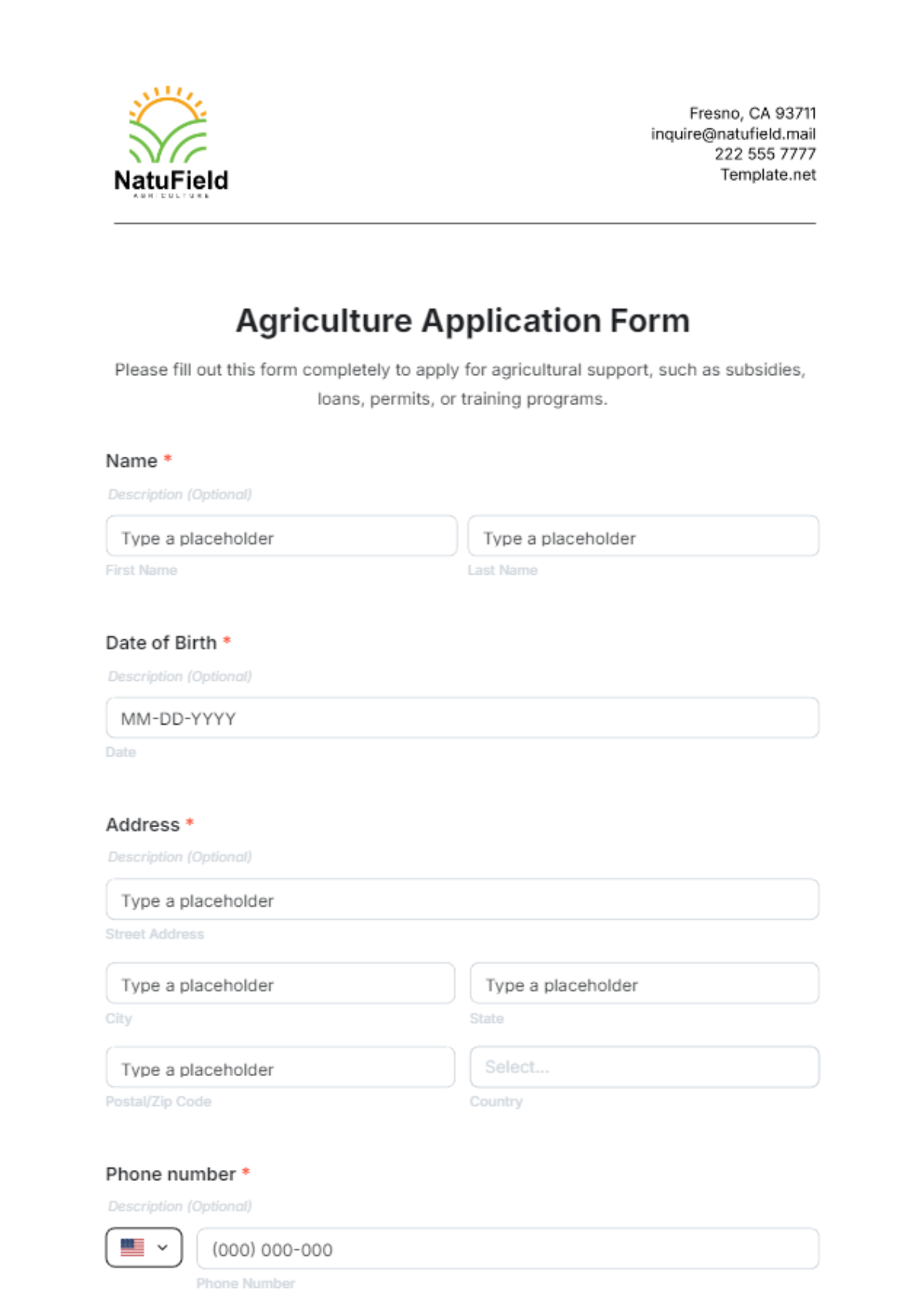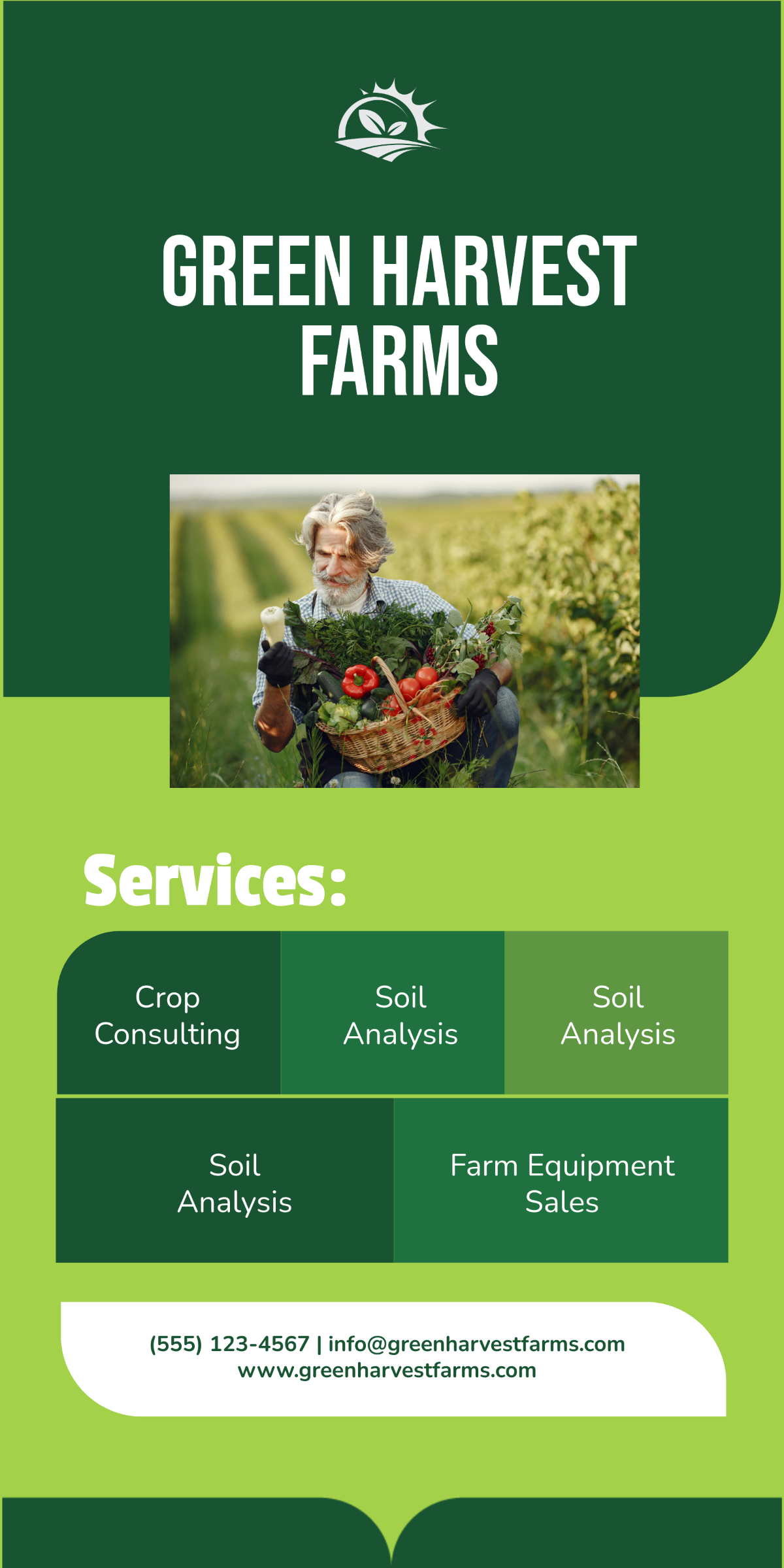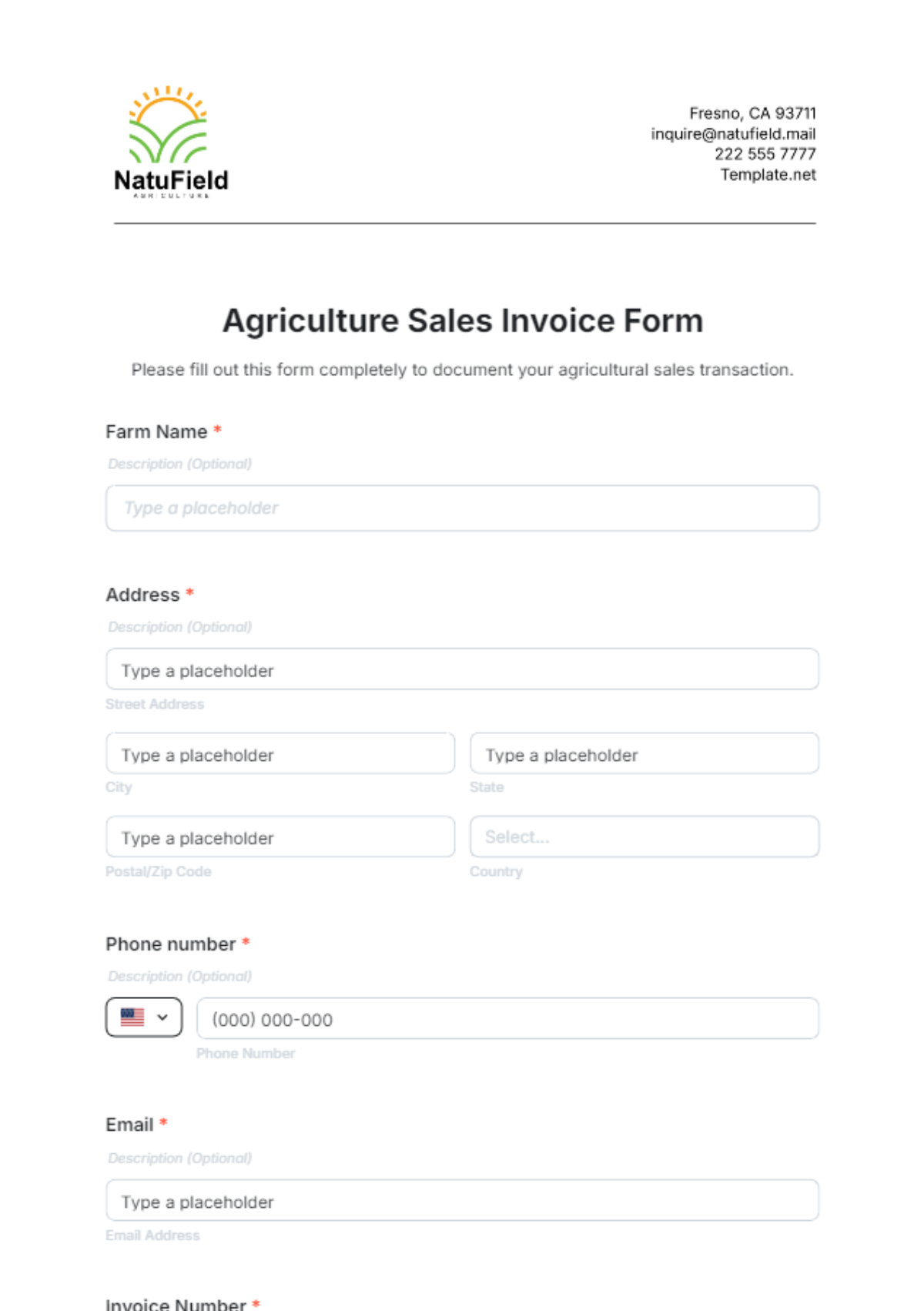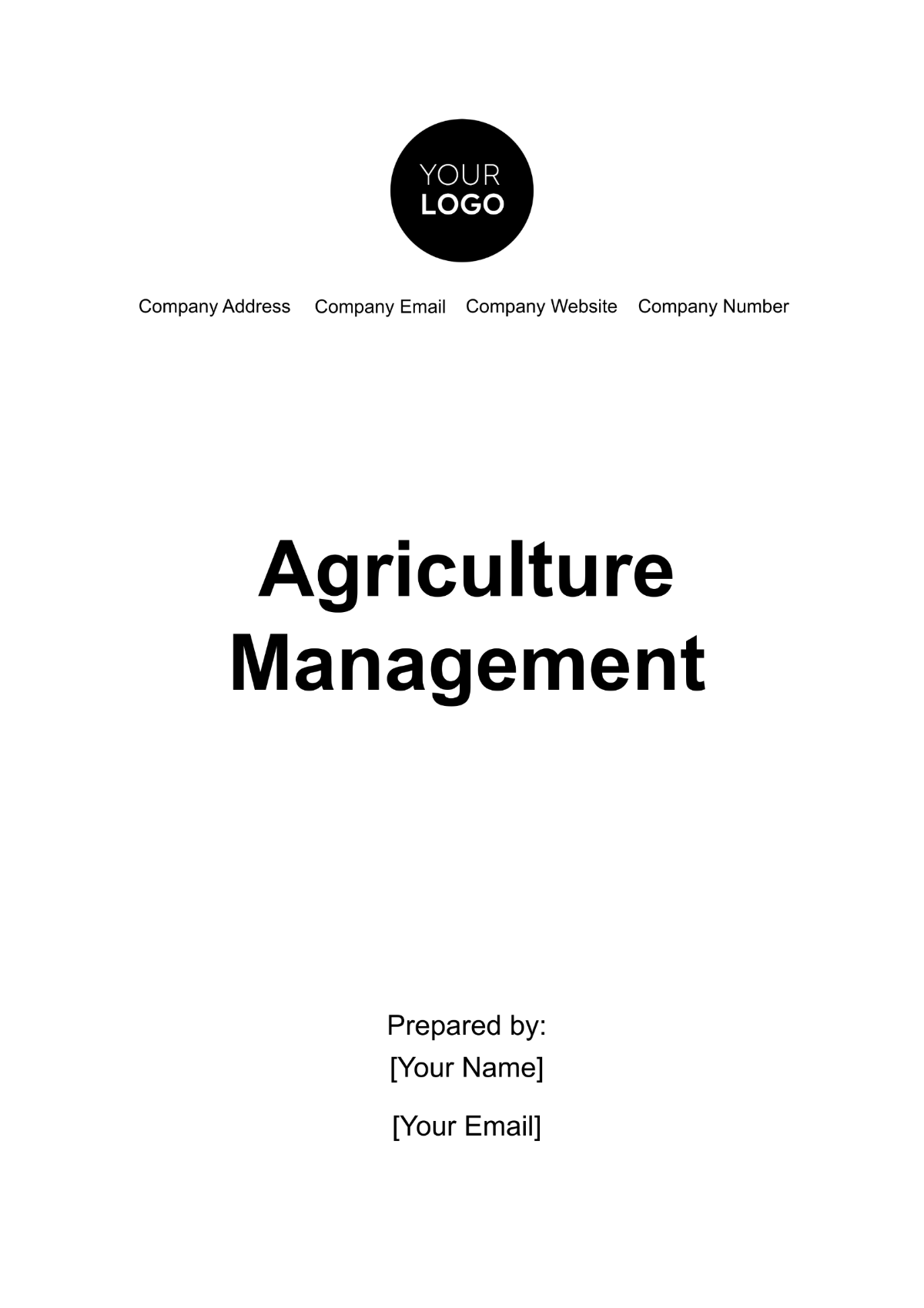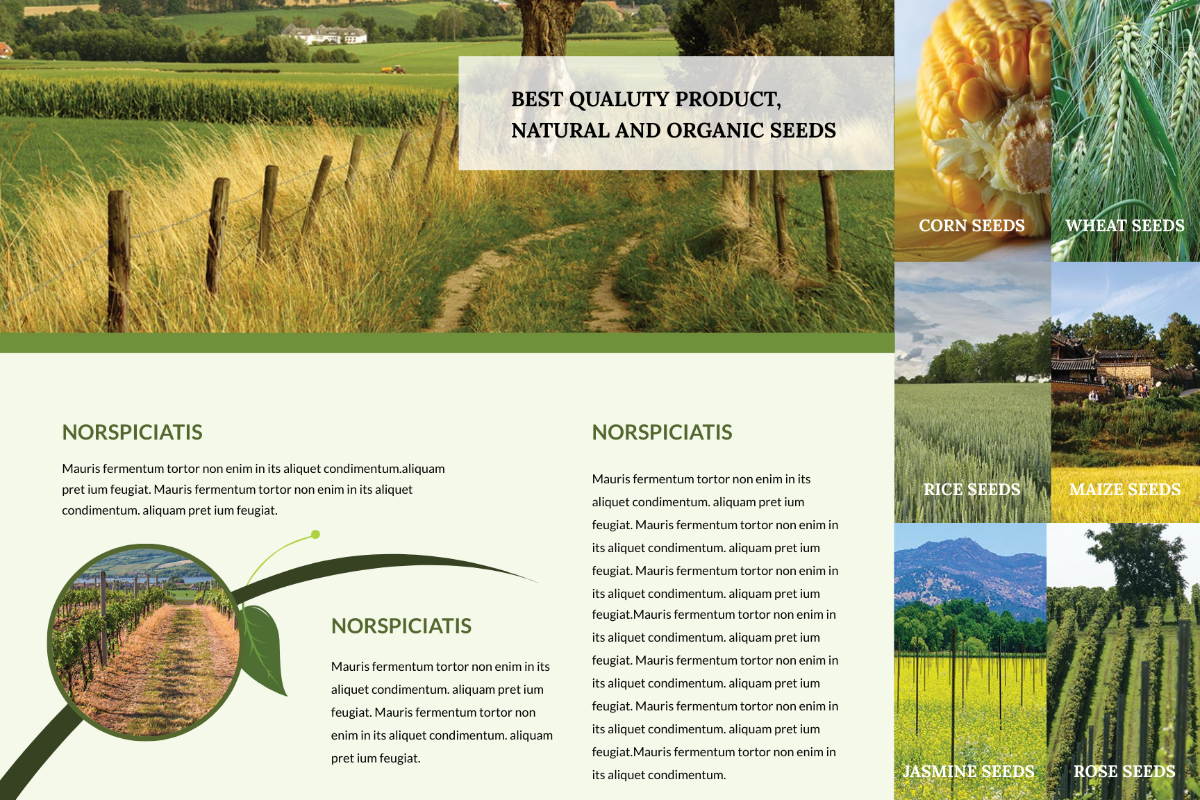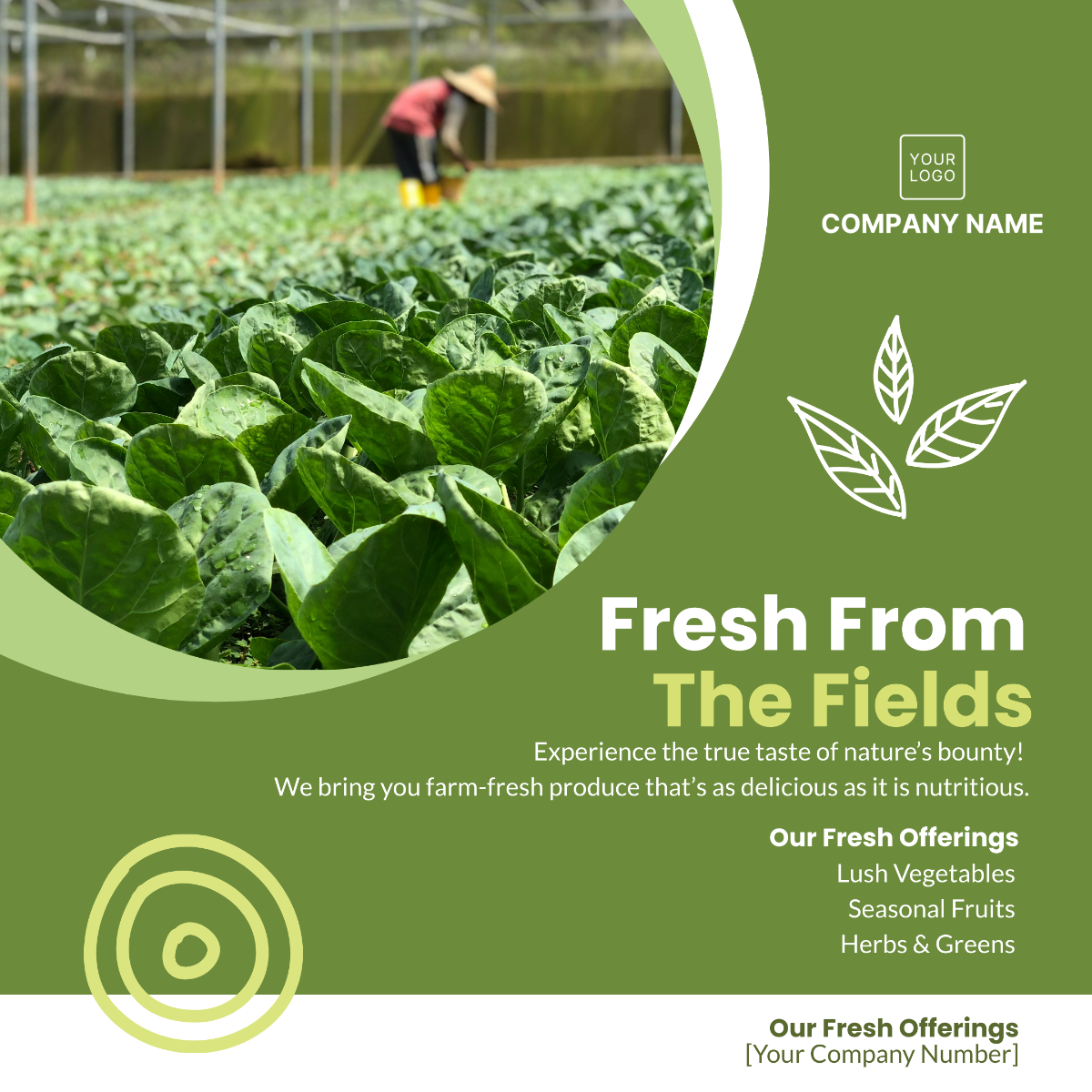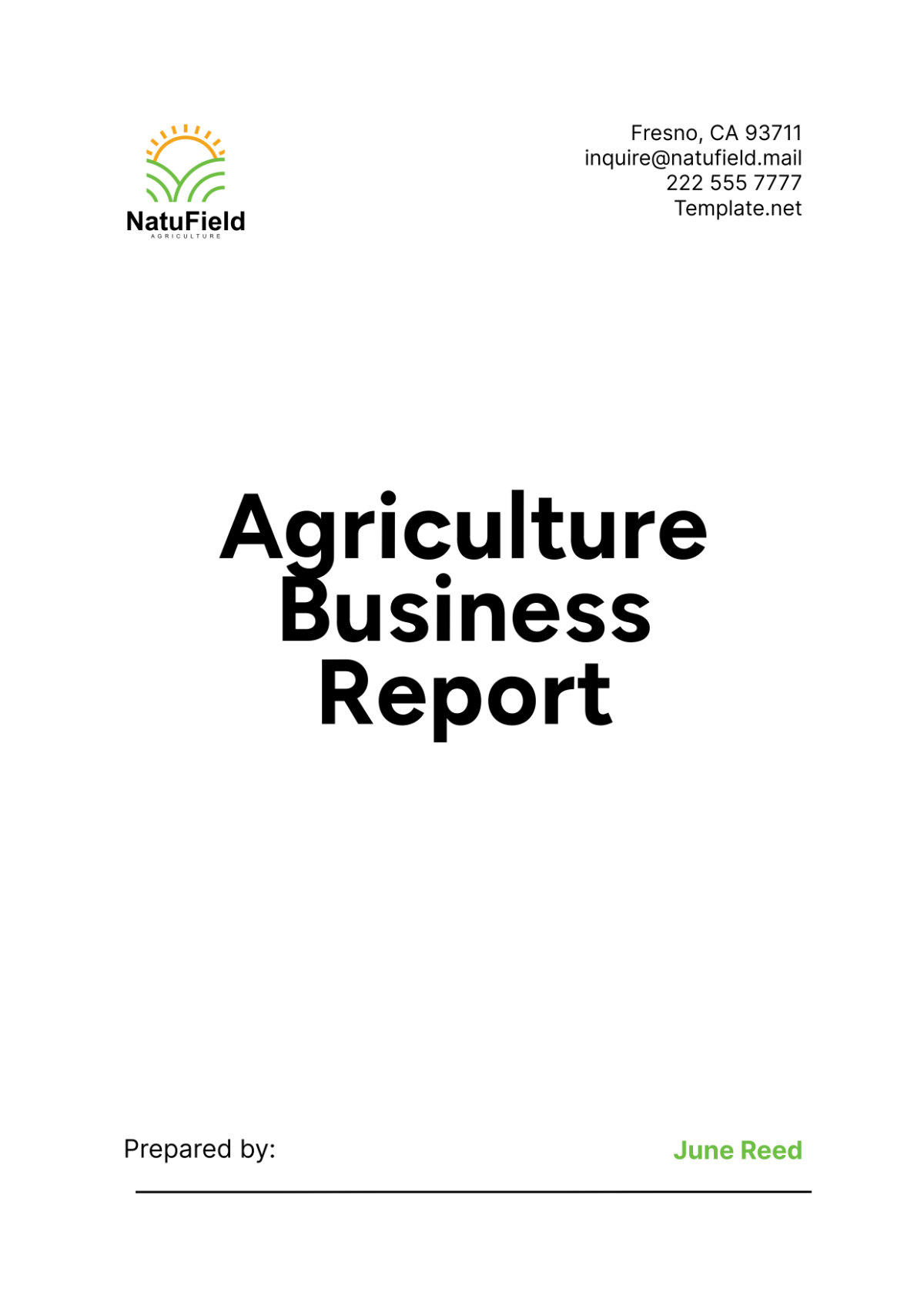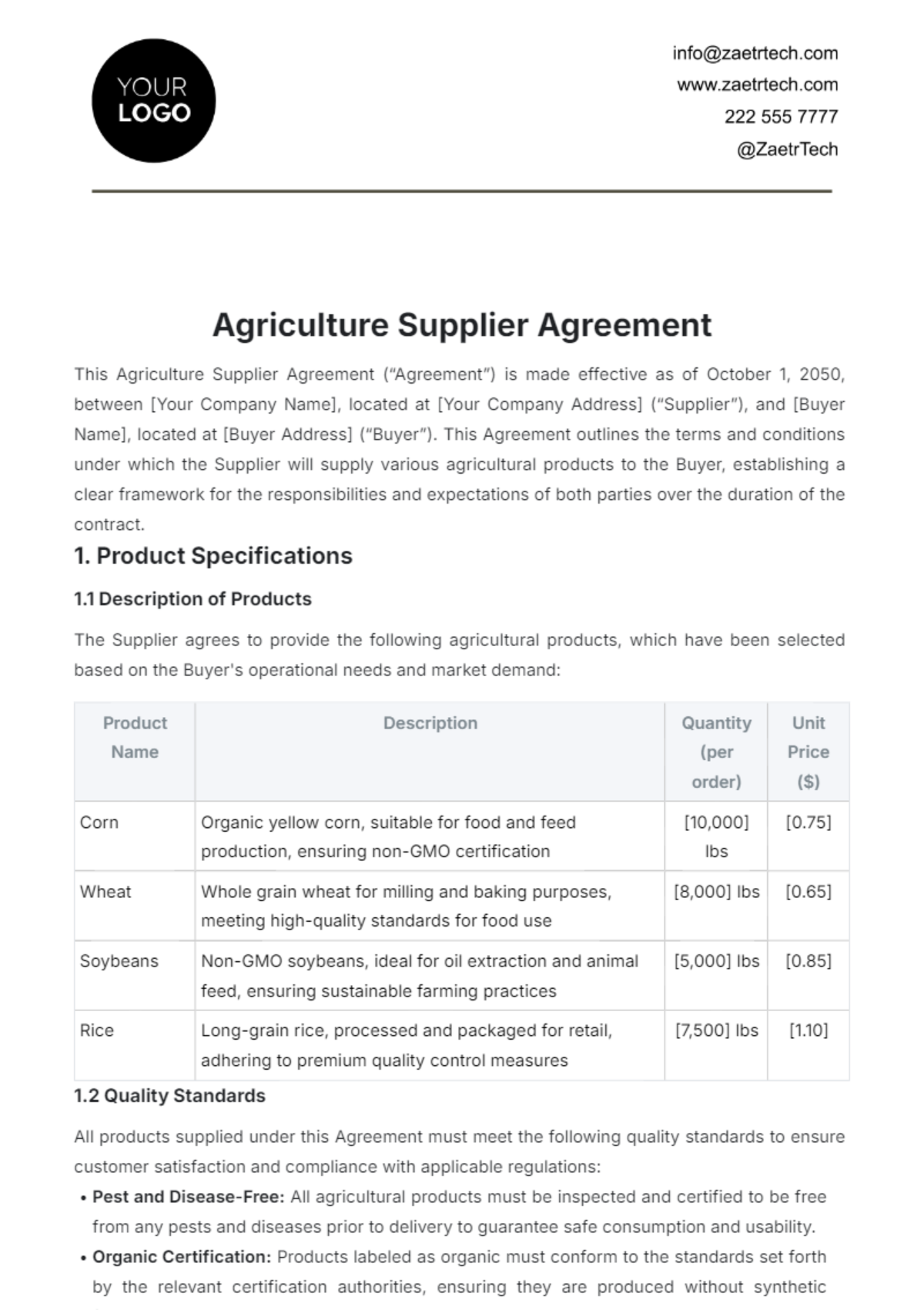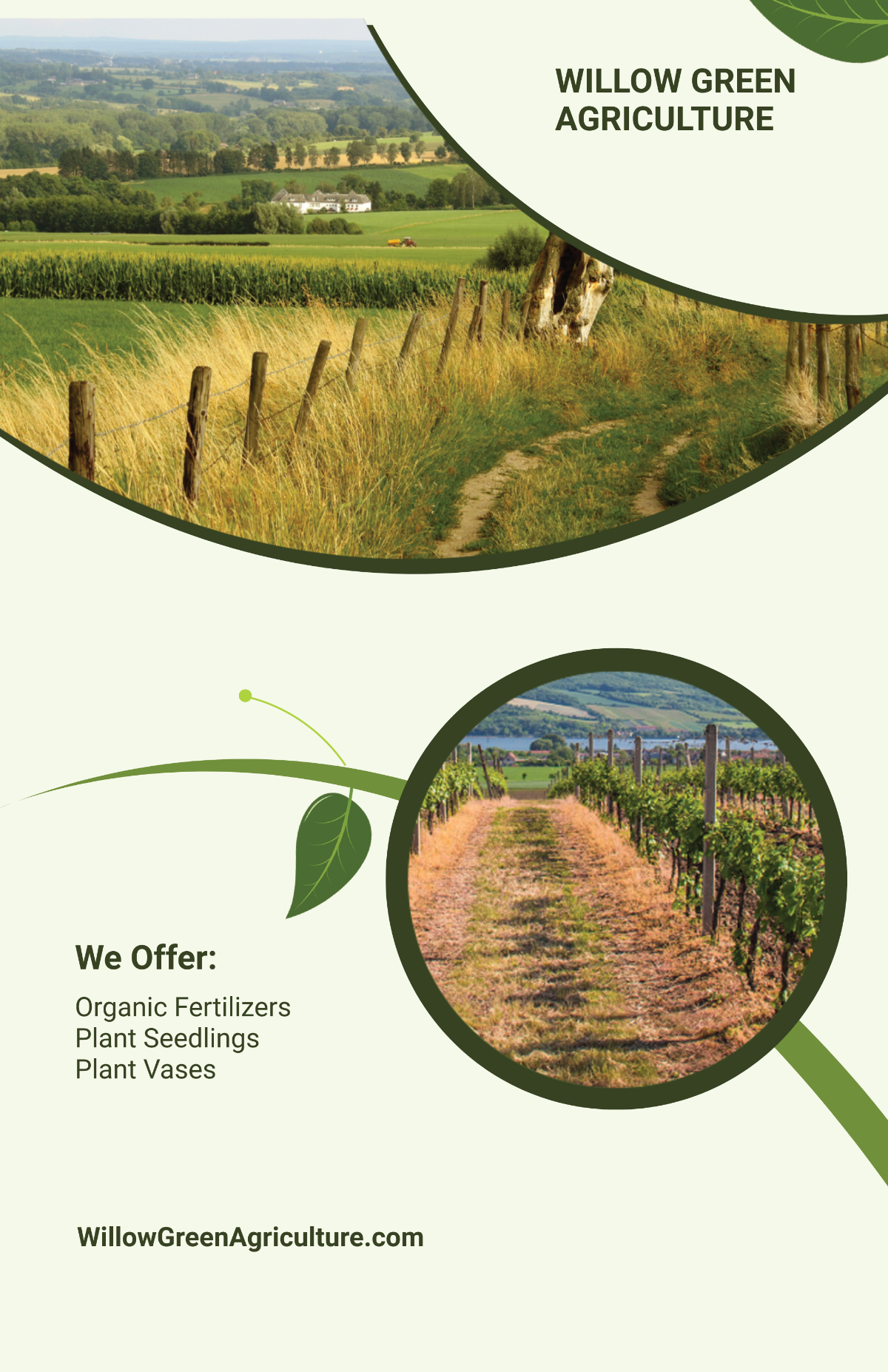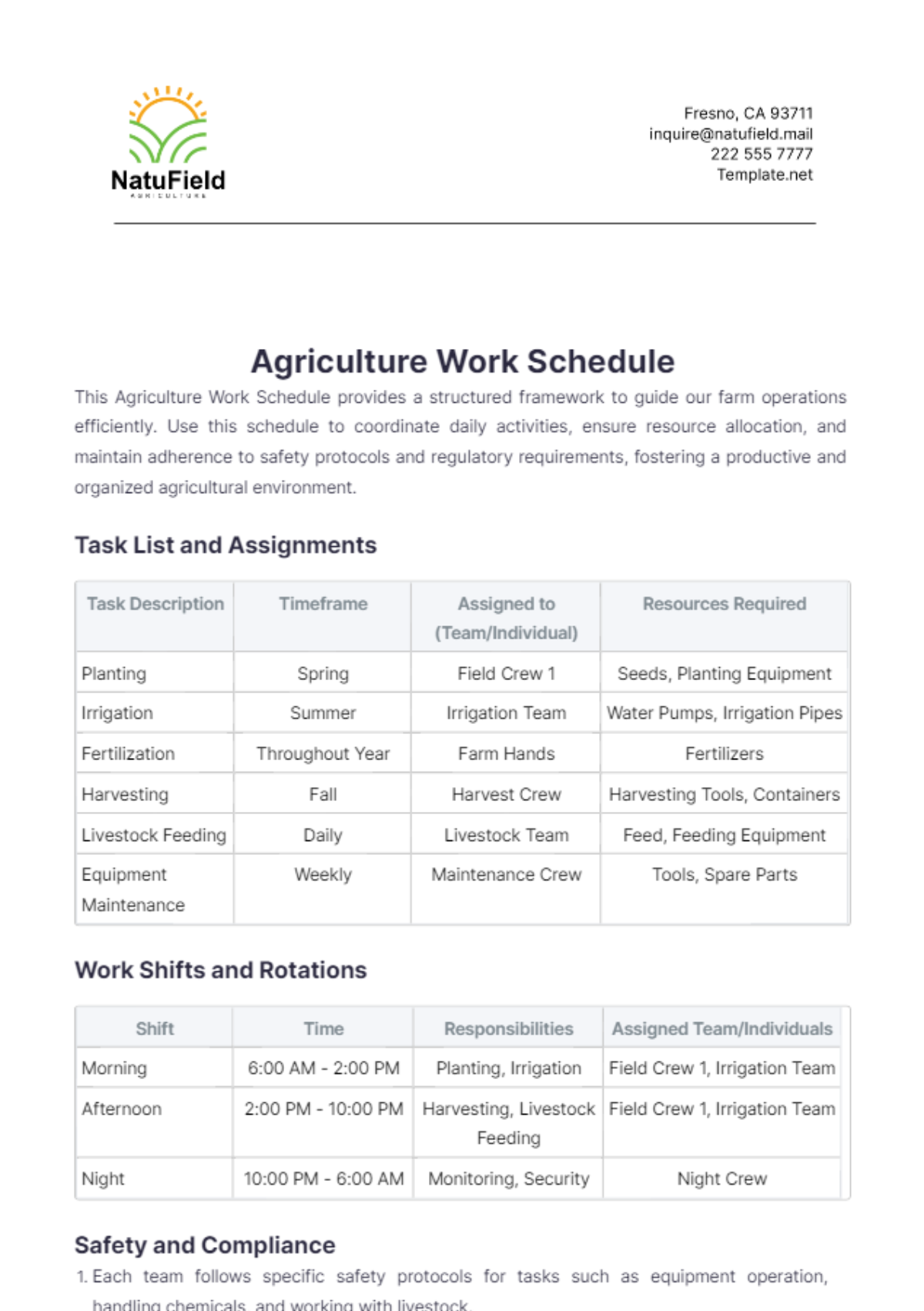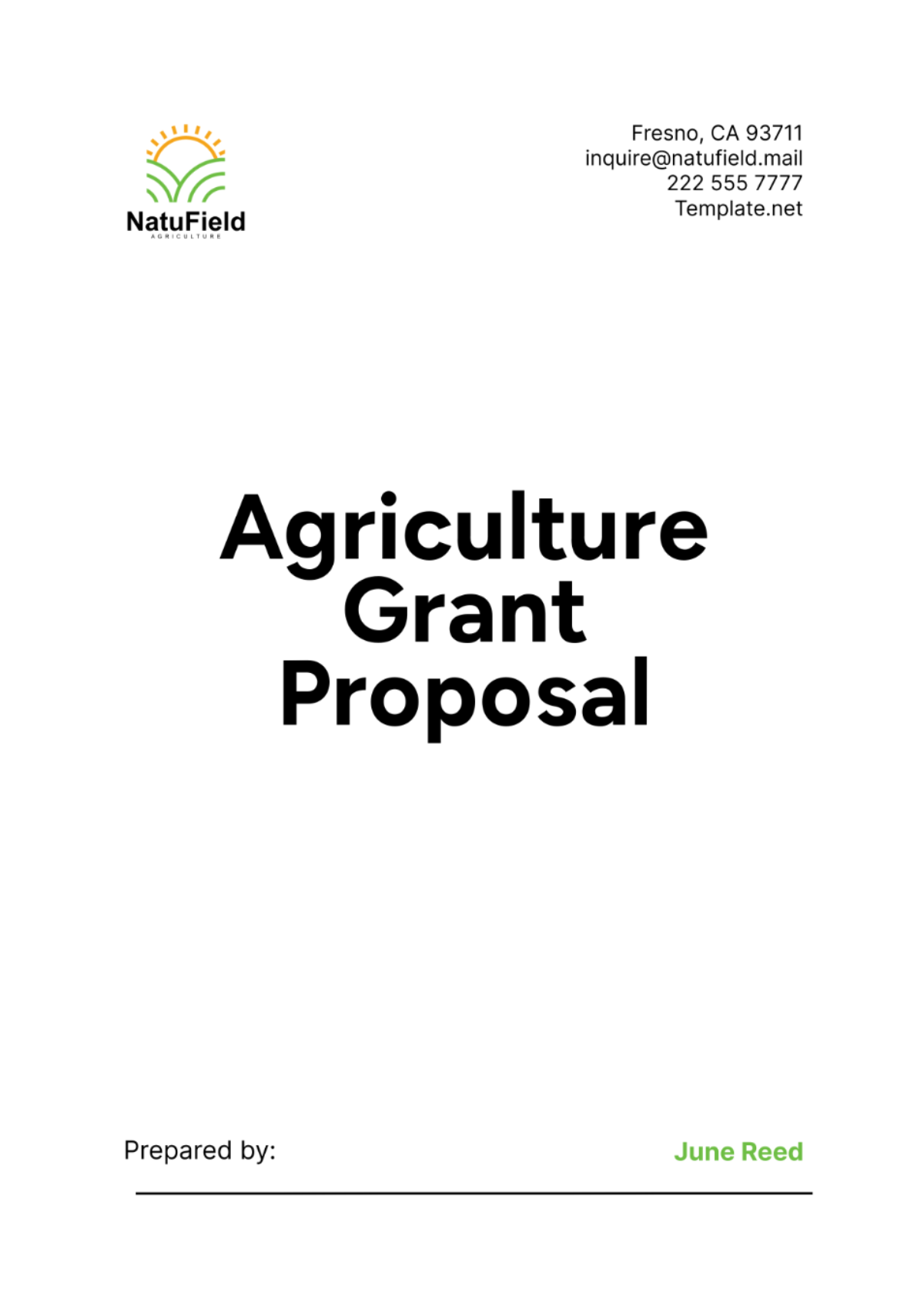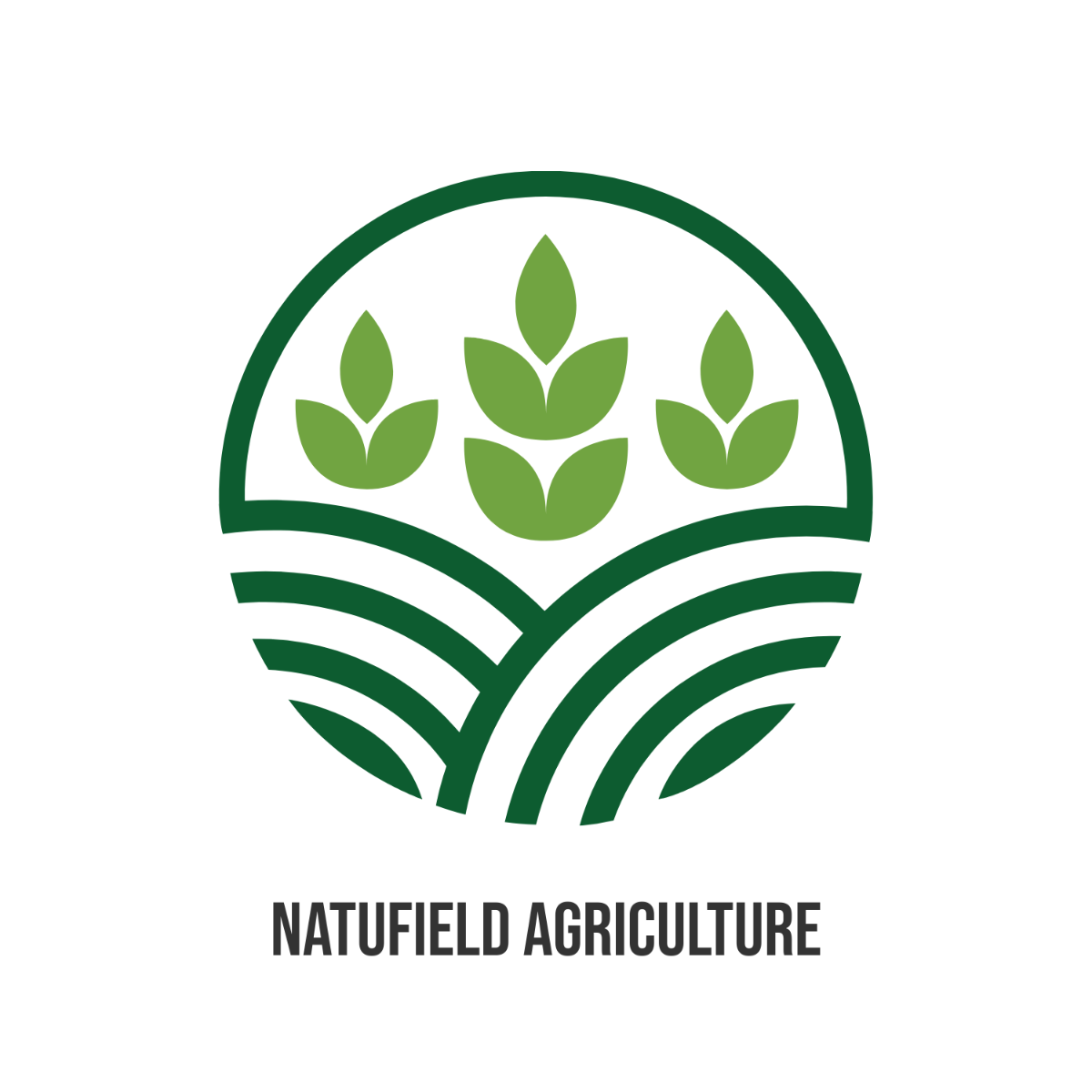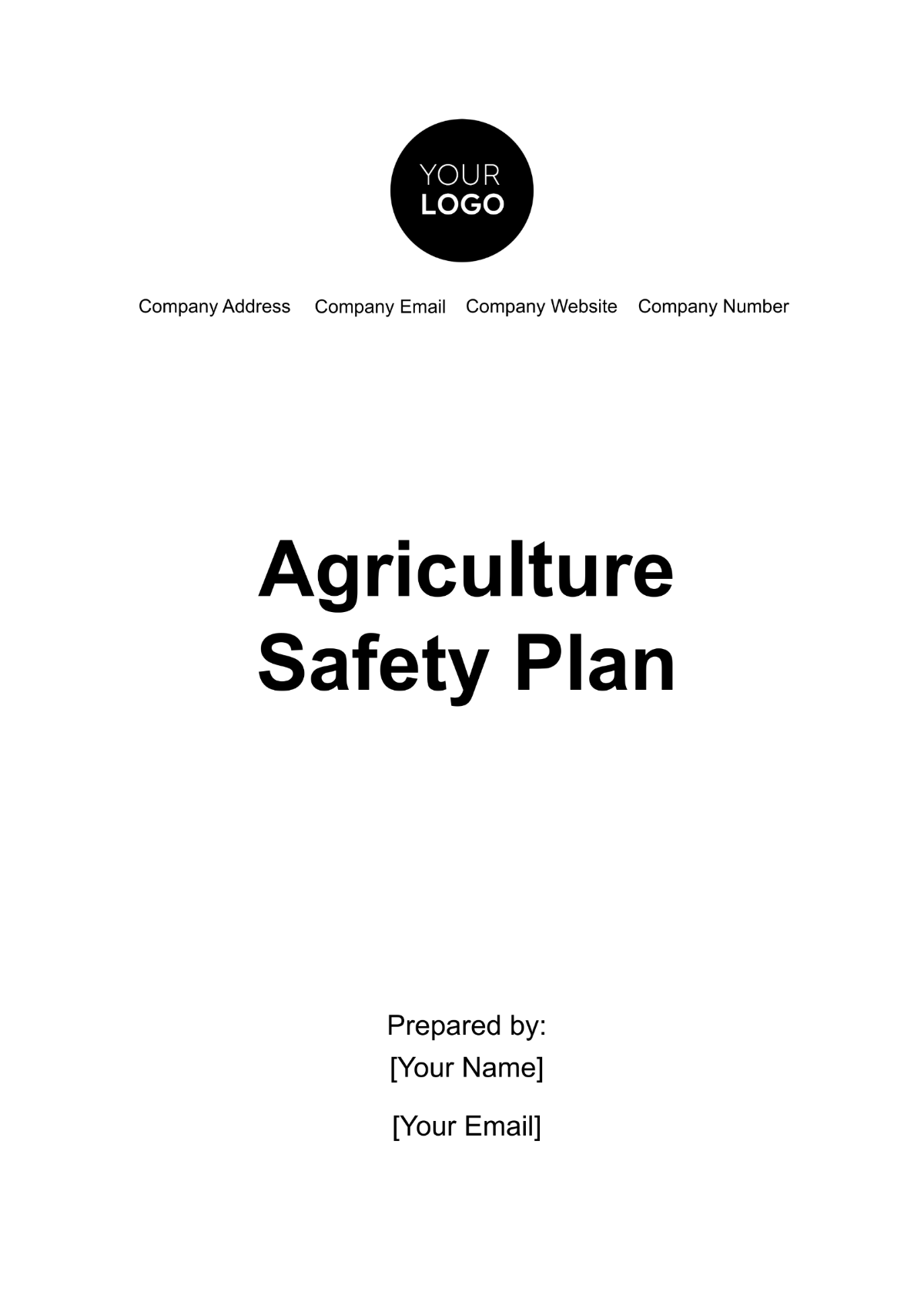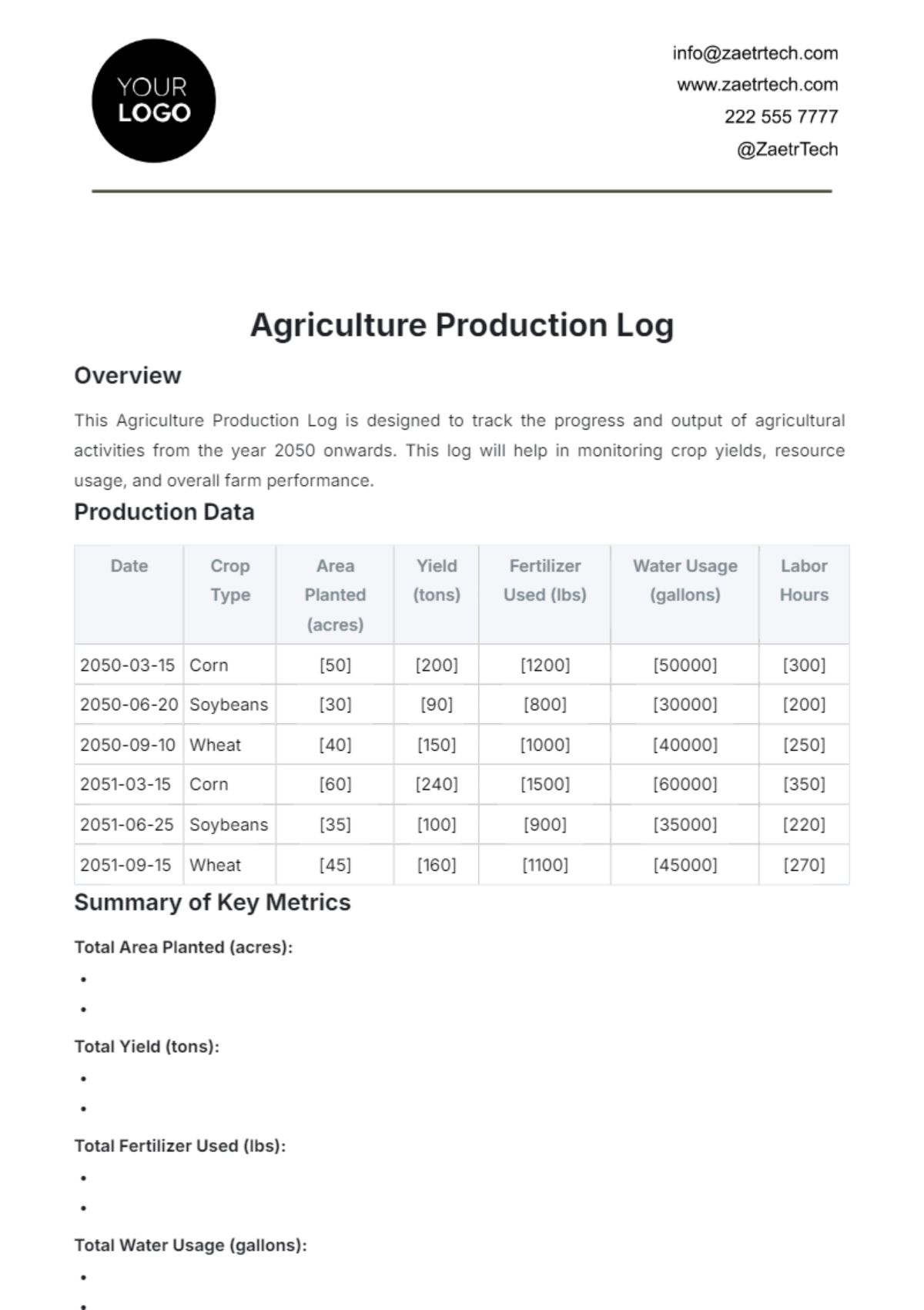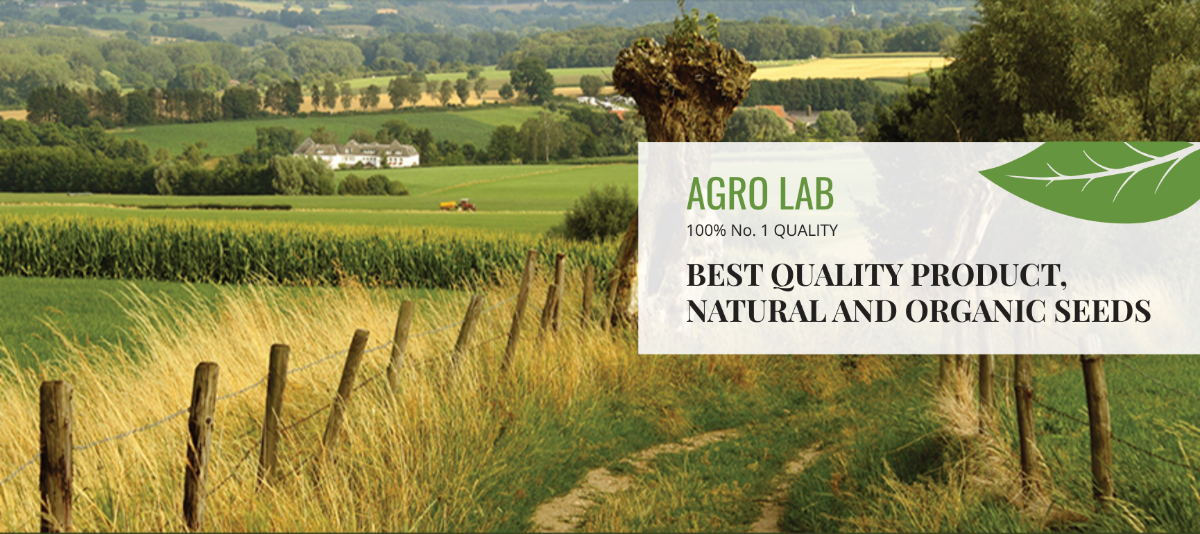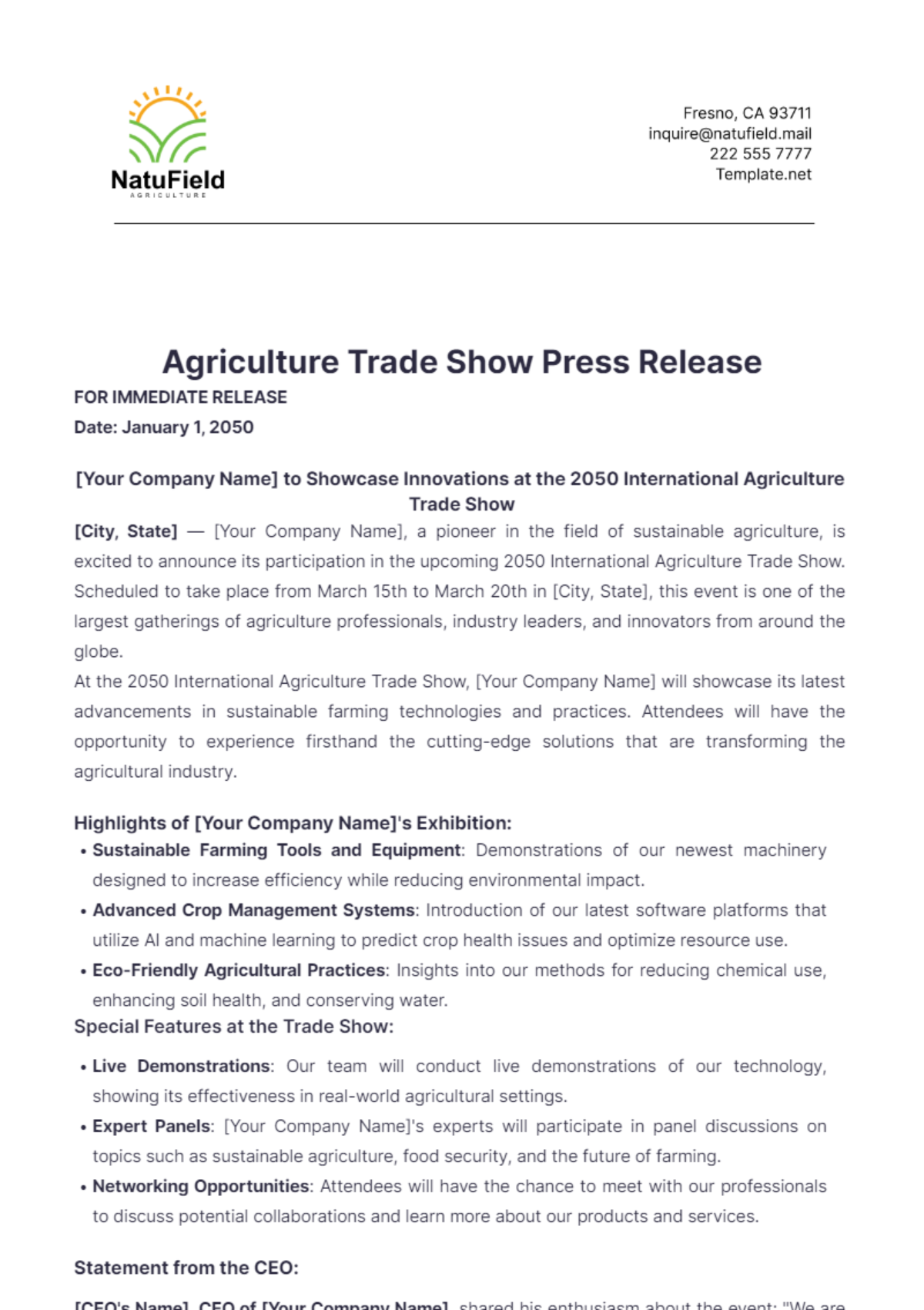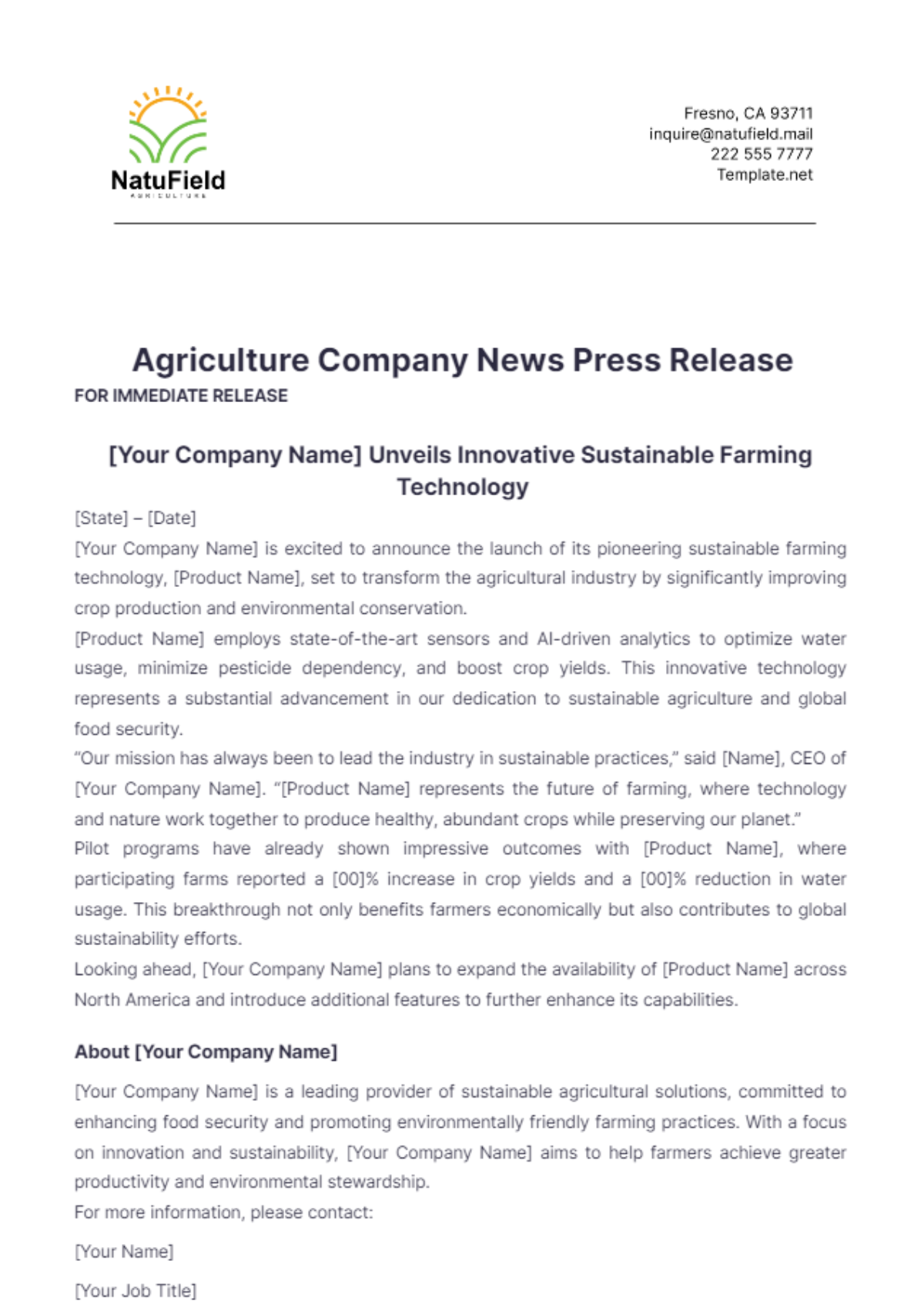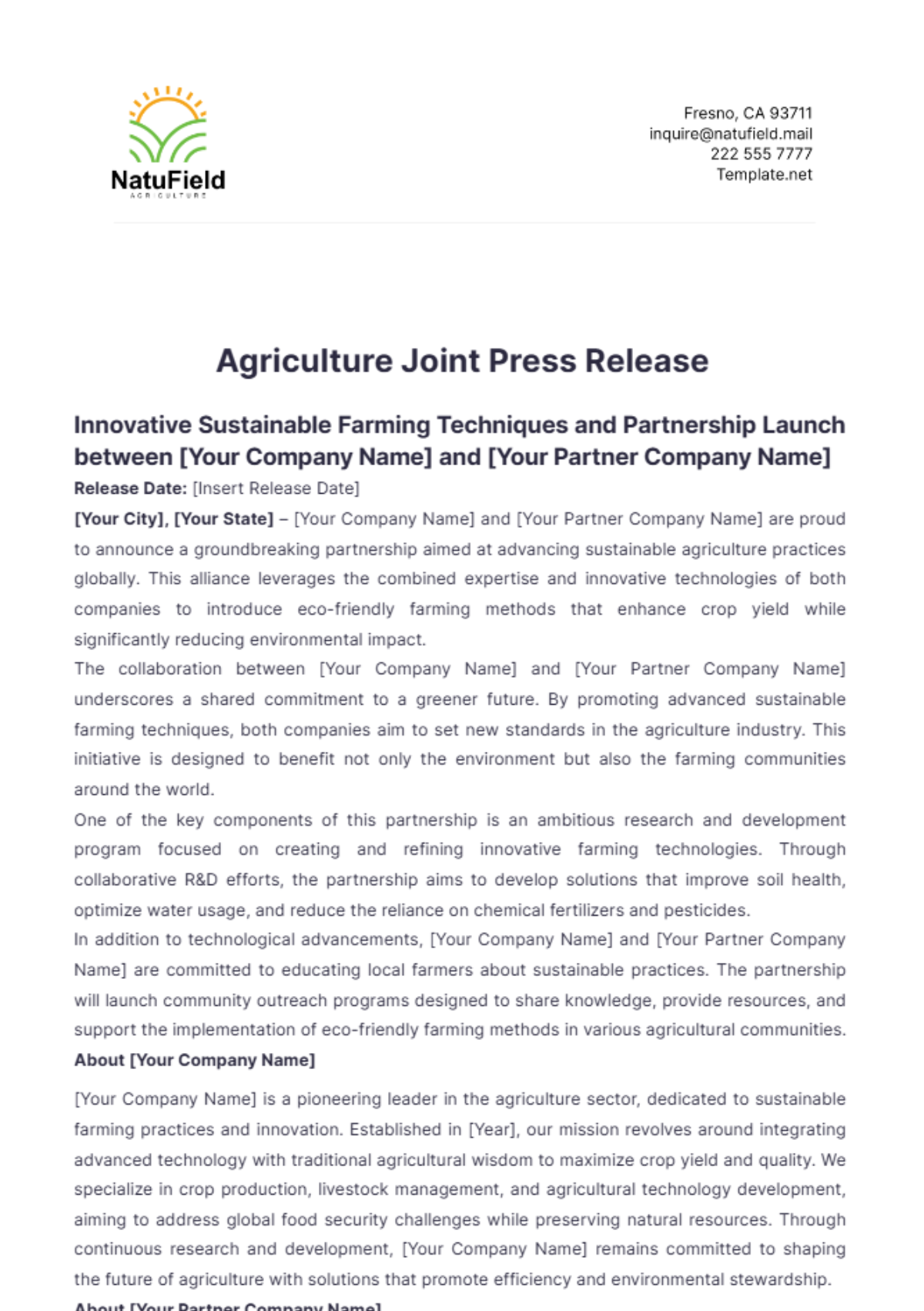Agriculture Green Project Feasibility Study
I. Executive Summary
A. Project Overview
[Your Company Name]'s feasibility study evaluates the potential for implementing an Agriculture Green Project on a 100-acre farm in [Your Company Address]. The project aims to transition from conventional farming methods to sustainable practices, focusing on organic farming, renewable energy use, and water conservation. The expected outcome is a fully sustainable farming operation that meets both environmental and market demands.
B. Objectives
The primary objectives are to enhance environmental sustainability, increase profitability through green products, and promote biodiversity. The project aims to reduce carbon emissions by [00]% and water usage by [00]%. Additionally, it seeks to achieve organic certification within two years of implementation.
C. Key Findings
The study finds that the project is technically feasible, environmentally beneficial, and financially viable with a projected ROI of [00]% over five years. Market analysis indicates strong demand for organic products, providing a lucrative opportunity. Technical assessments show that the necessary resources and expertise are readily available for the transition.
D. Recommendations
It is recommended to proceed with the project, securing necessary permits and funding to begin implementation within the next fiscal year. Emphasis should be placed on training staff and acquiring the required technologies. Continuous monitoring and adaptive management practices are essential to ensure long-term sustainability.
II. Introduction
A. Purpose of the Study
The purpose of this study is to assess the feasibility of transitioning to sustainable agricultural practices on a 100-acre farm. This involves evaluating the technical, environmental, and financial aspects of the proposed project. The study aims to provide stakeholders with a comprehensive understanding of the potential benefits and challenges.
B. Scope of the Project
The project includes converting all crop production to organic methods, installing solar panels, implementing advanced irrigation systems, and improving soil health. It also encompasses the integration of waste management practices and biodiversity enhancement measures. The timeframe for the project is five years, with phased implementation.
C. Methodology
Data was collected through field surveys, expert consultations, market analysis, and financial modeling. The study also involved a review of relevant literature and case studies of similar projects. A multi-disciplinary approach was used to ensure a thorough evaluation of all aspects.
III. Project Description
A. Project Background
The farm has been operating with conventional methods for 20 years, facing challenges such as soil degradation and high input costs. Transitioning to sustainable practices aims to address these issues and improve overall farm resilience. Historical data and current farm practices were analyzed to establish a baseline for comparison.
B. Objectives and Goals
The goals are to improve soil health, reduce carbon footprint, and enhance profitability through premium-priced organic products. Specific objectives include achieving a [00]% reduction in chemical inputs and a [00]% increase in soil organic matter within three years. The project also aims to establish a model for sustainable farming practices that can be replicated in the region.
C. Proposed Sustainable Practices
Organic Farming
Transitioning to organic farming by eliminating synthetic fertilizers and pesticides. This will involve the use of natural alternatives such as compost, green manure, and biological pest control. Regular soil testing and crop rotation will be implemented to maintain soil fertility and health.
Renewable Energy Use
Installing solar panels to meet [00]% of the farm’s energy needs. This will reduce reliance on non-renewable energy sources and lower operational costs. The energy produced will power irrigation systems, farm machinery, and storage facilities.
Water Conservation Methods
Implementing drip irrigation systems to reduce water usage by [00]%. This method delivers water directly to the plant roots, minimizing evaporation and runoff. Rainwater harvesting systems will also be installed to supplement irrigation needs.
Soil Health Improvement
Using cover crops and composting to enhance soil fertility. Cover crops such as legumes will fix nitrogen in the soil, while composting organic waste will add essential nutrients. Soil health will be monitored through regular testing and adjusted management practices.
Waste Management
Establishing a composting system for organic waste recycling. This will include composting crop residues, animal manure, and other organic materials to create nutrient-rich compost. The system will reduce waste and improve soil quality, contributing to overall farm sustainability.
IV. Market Analysis
A. Market Demand for Green Agricultural Products
Increasing consumer demand for organic and sustainably produced food is driving market growth. Surveys indicate that [00]% of consumers are willing to pay a premium for organic products. This trend presents a significant opportunity for the farm to capture a share of the growing market.
B. Target Customers
Target customers include health-conscious consumers, local organic markets, and eco-friendly retailers. These segments are characterized by higher disposable incomes and a strong preference for sustainable products. Direct-to-consumer sales through farmers' markets and online platforms will also be explored.
C. Competitive Landscape
Key competitors include local organic farms and national organic brands. While competition is increasing, there is still ample room for new entrants, especially those offering unique products or superior quality. Differentiation through exceptional product quality and sustainable practices will be essential for market success.
D. Market Trends
Trends indicate a [00]% annual growth in the organic food sector. There is also a rising interest in locally-sourced and farm-to-table products. The farm can capitalize on these trends by promoting its local and sustainable production methods.
E. SWOT Analysis
Strengths: High-quality produce, sustainability commitment, and experienced management team.
Weaknesses: Initial high costs, need for certification, and potential yield variability.
Opportunities: Growing market demand, premium pricing, and potential for value-added products.
Threats: Market competition, regulatory changes, and climatic variability.
V. Technical Feasibility
A. Resource Availability
Land
The 100-acre farm is suitable for organic crop production. Soil tests confirm the presence of fertile loam soil, ideal for diverse crop cultivation. The farm's topography and climate are also conducive to organic farming practices.
Water
Adequate water supply from a nearby river ensures sufficient irrigation. Additionally, the implementation of water conservation techniques will optimize water use. A feasibility study for a rainwater harvesting system has also shown positive results.
Seeds and Plants
Access to certified organic seeds and plants is available through local suppliers. Partnerships with organic seed companies will ensure a consistent supply of high-quality inputs. The farm will also establish a seed bank to maintain genetic diversity and resilience.
B. Technological Requirements
Equipment
Procurement of organic farming equipment and tools will be necessary. This includes tractors with low-emission engines, compost spreaders, and no-till seed drills. Regular maintenance and upgrades will ensure optimal performance and longevity.
Renewable Energy Systems
Installation of solar panels to cover energy needs. The system will include battery storage to ensure a steady power supply during low sunlight periods. Technical support and maintenance will be provided by a certified renewable energy provider.
Irrigation Systems
Advanced drip irrigation systems for efficient water use. The system will be equipped with sensors and automated controls to optimize water delivery. Regular monitoring and maintenance will ensure efficient operation and water conservation.
C. Expertise and Skills Needed
Training for farm staff in organic farming practices and maintenance of new technologies. Partnerships with agricultural extension services and training programs will be established. Continuous education and skill development will be prioritized to adapt to evolving practices.
VI. Environmental Impact Assessment
A. Positive Environmental Impacts
Reduction in Carbon Footprint
The project will significantly reduce carbon emissions by replacing fossil fuels with solar energy. Organic farming practices will further decrease greenhouse gas emissions by minimizing the use of synthetic fertilizers and pesticides. This reduction will contribute to global efforts to combat climate change and promote a healthier environment.
Enhanced Biodiversity
The transition to organic farming will foster increased biodiversity by creating a habitat conducive to a variety of plant and animal species. Cover crops and diverse crop rotations will attract beneficial insects and pollinators, improving ecosystem health. Additionally, reduced chemical usage will allow native flora and fauna to thrive.
Improved Soil Health
The adoption of organic farming practices will enhance soil structure and fertility. The use of compost and cover crops will increase organic matter in the soil, improving water retention and nutrient availability. Healthy soils will support robust plant growth and contribute to long-term agricultural productivity.
B. Potential Negative Impacts
Habitat Disruption
Temporary habitat disruption may occur during the installation of solar panels and other infrastructure. Construction activities could disturb local wildlife and vegetation. Careful planning and mitigation measures will be implemented to minimize these disruptions.
Resource Depletion
The initial phase of the project may require substantial water usage for establishing new crops and irrigation systems. This increased demand could strain local water resources if not managed properly. Efficient water use strategies and rainwater harvesting will be employed to mitigate this impact.
Economic Risks
The transition to organic farming may result in initial yield reductions and increased costs. These economic challenges could impact the farm's financial stability during the early stages of the project. Support from grants and subsidies will help offset these initial economic risks.
C. Mitigation Strategies
Implementing construction best practices and optimizing water use efficiency. Habitat disruption will be minimized by scheduling construction during non-breeding seasons and creating buffer zones. Economic risks will be mitigated through financial planning, securing funding, and gradually scaling up organic practices to ensure a smooth transition.
VII. Financial Analysis
A. Cost Estimates
Initial Investment
The initial investment is estimated at $[00], covering equipment, solar panels, and irrigation systems. This includes $[00] for renewable energy infrastructure, $[00] for organic farming equipment, and $[00] for water management systems. Detailed cost breakdowns are provided in the appendices.
Operational Costs
Annual operational costs are projected at $[00], which includes organic inputs, labor, and maintenance. This estimate accounts for the higher cost of organic fertilizers and pest control methods compared to conventional inputs. Efficient resource management and bulk purchasing will help reduce these costs over time.
Contingency Fund
A contingency fund of $[00] will be established to cover unexpected expenses. This fund will ensure financial stability in case of unforeseen challenges such as equipment failures or natural disasters. Regular financial reviews will be conducted to maintain an adequate contingency reserve.
B. Funding Requirements
Seeking $[00] in grants and loans to cover initial costs. Potential sources include government subsidies for renewable energy projects, agricultural grants for sustainable practices, and low-interest loans from green investment funds. Additional funding will be sought from private investors interested in supporting sustainable agriculture initiatives.
C. Revenue Projections
Expected annual revenue of $[00] from organic produce sales. This projection is based on market analysis and current price premiums for organic products. Revenue is expected to grow as the farm establishes a reputation for high-quality, sustainably produced food.
D. Break-even Analysis
Projected break-even point in three years. The analysis considers initial investment, operational costs, and expected revenue. Achieving break-even within this timeframe will require effective marketing and cost management strategies.
E. Return on Investment (ROI)
Estimated ROI of [00]% over five years. This positive ROI reflects the financial viability and profitability of the project. Long-term financial benefits include reduced input costs, premium pricing for organic products, and potential income from renewable energy credits.
VIII. Legal and Regulatory Considerations
A. Permits and Certifications
Obtaining organic certification and permits for solar panel installation. Certification will be sought from recognized bodies such as the USDA Organic program, ensuring compliance with organic farming standards. Solar panel installation will require permits from local authorities to meet safety and zoning regulations.
B. Compliance with Environmental Laws
Ensuring all practices meet local and federal environmental regulations. This includes adherence to guidelines on water usage, pesticide application, and waste management. Regular audits and inspections will be conducted to maintain compliance and address any issues promptly.
C. Zoning and Land Use Regulations
Verifying compliance with zoning laws for agricultural and energy use. The farm's operations must align with local zoning codes that govern land use for farming and renewable energy projects. Consultations with local planning authorities will ensure that all activities are permissible and properly documented.
IX. Risk Assessment
A. Identification of Potential Risks
Environmental Risks
Unpredictable weather patterns affecting crop yield. Climate change poses a risk to consistent crop production, with potential impacts from droughts, floods, and storms. Adaptation strategies will be necessary to mitigate these environmental risks.
Financial Risks
Fluctuations in market prices for organic products. While organic products generally command higher prices, market volatility can affect profitability. Diversifying income sources and securing long-term contracts with buyers will help stabilize revenue.
Operational Risks
Potential equipment failures or maintenance issues. Dependence on new technologies such as solar panels and advanced irrigation systems introduces risks related to equipment performance and maintenance. Regular maintenance schedules and backup systems will be implemented to reduce operational risks.
B. Risk Mitigation Strategies
Diversifying crops, securing insurance, and regular equipment maintenance. Crop diversification will spread risk and reduce dependence on any single crop. Insurance policies will protect against losses from natural disasters and market fluctuations. Preventative maintenance and staff training will ensure equipment reliability.
X. Sustainability Plan
A. Long-term Sustainability Goals
Maintaining organic certification and reducing overall environmental footprint. The farm aims to continuously improve its sustainability practices, achieving zero waste and carbon neutrality within ten years. Ongoing investments in renewable energy and water conservation will support these long-term goals.
B. Monitoring and Evaluation Plans
Regular monitoring of soil health, water usage, and energy consumption. Key performance indicators (KPIs) will be established to track progress and identify areas for improvement. Annual sustainability reports will be published to communicate results to stakeholders.
C. Continuous Improvement Strategies
Adopting new sustainable practices and technologies as they become available. The farm will stay informed about advancements in sustainable agriculture and integrate them into operations. Participation in sustainability networks and attending relevant conferences will facilitate continuous learning and improvement.
XI. Conclusion and Recommendations
A. Summary of Findings
The project is feasible, with significant environmental and financial benefits. Comprehensive analysis shows that transitioning to sustainable practices is both viable and advantageous. The project's success will depend on effective implementation and ongoing management.
B. Overall Feasibility
Positive assessment based on technical, environmental, and financial analyses. The project aligns with market trends and consumer preferences, enhancing its likelihood of success. Long-term sustainability goals further support the project's feasibility and potential for positive impact.
C. Next Steps
Proceed with securing funding, obtaining necessary permits, and starting implementation. Immediate actions include applying for grants, finalizing equipment purchases, and scheduling staff training. A detailed project plan will be developed to guide the transition and ensure timely progress.
